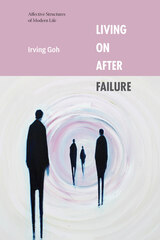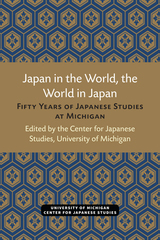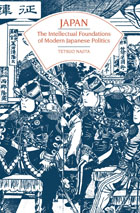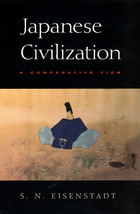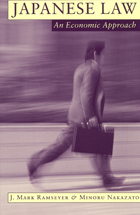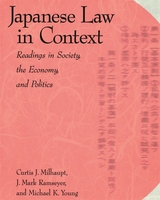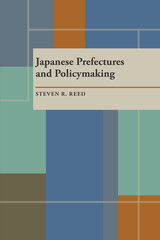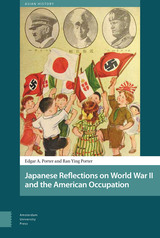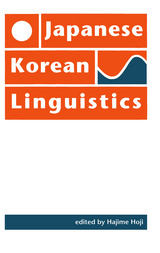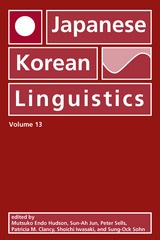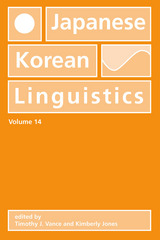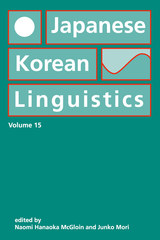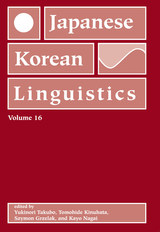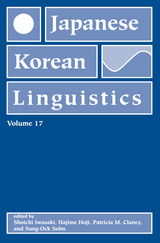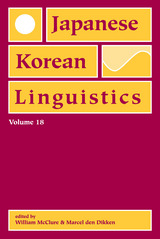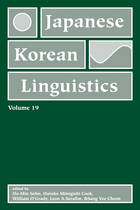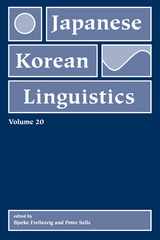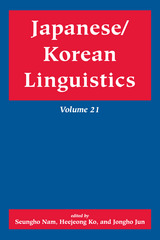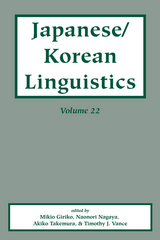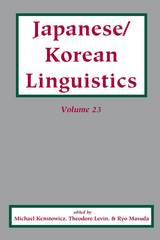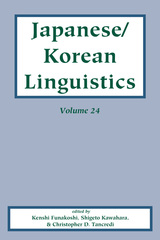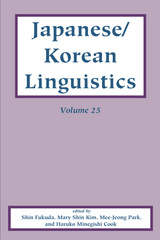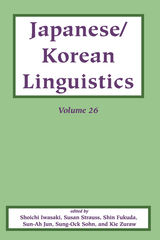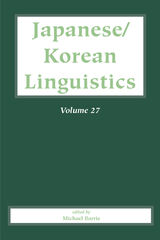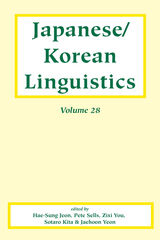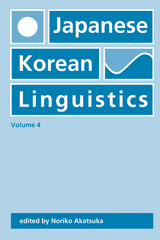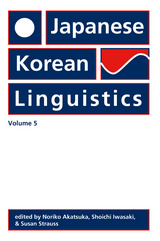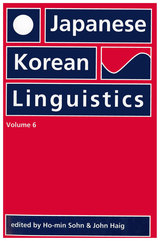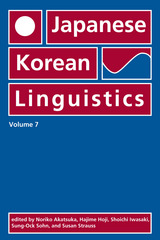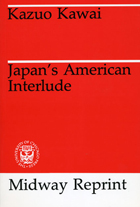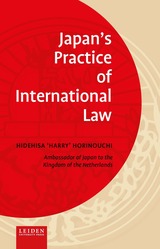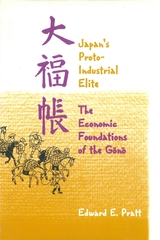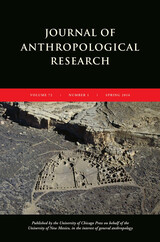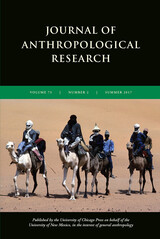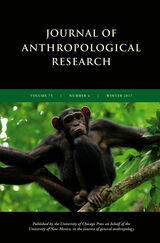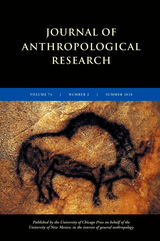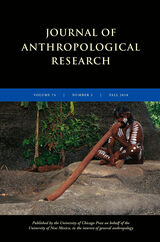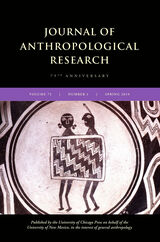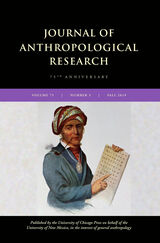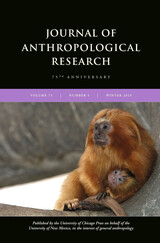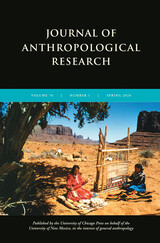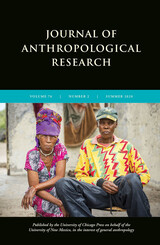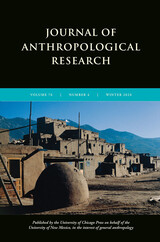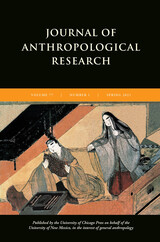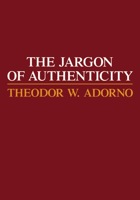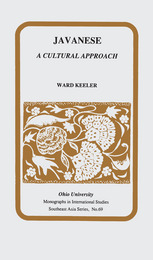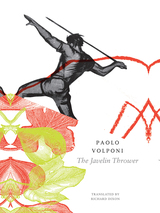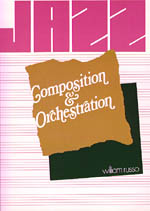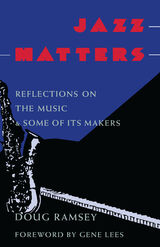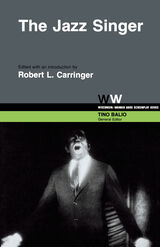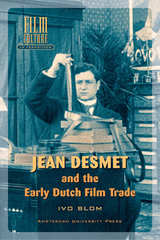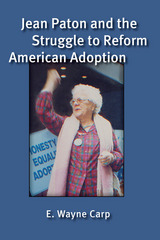 Janelle Monáe's Queer Afrofuturism: Defying Every Label
Dan Hassler-Forest
Rutgers University Press, 2022 Singer. Dancer. Movie star. Activist. Queer icon. Afrofuturist. Working class heroine. Time traveler. Prophet. Feminist. Android. Dirty Computer.
Janelle Monáe is all these things and more, making her one of the most fascinating artists to emerge in the twenty-first century. This provocative new study explores how Monáe’s work has connected different media platforms to strengthen and enhance new movements in art, theory, and politics. It considers not only Monáe’s groundbreaking albums The ArchAndroid, The Electric Lady, and Dirty Computer, but also Monáe’s work as an actress in such films as Hidden Figures and Antebellum, as well as her soundtrack appearances in socially-engaged projects ranging from I May Destroy You to Us. Examining Monáe as a cultural icon whose work is profoundly intersectional, this book maps how she is actively reshaping discourses around race, gender, sexuality, and capitalism. Tracing Monáe’s performances of joy, desire, pain, and hope across a wide range of media forms, it shows how she imagines Afrofuturist, posthumanist, and postcapitalist utopias, while remaining grounded in the realities of being a Black woman in a white-dominated industry. This is an exciting introduction to an audacious innovator whose work offers us fresh ways to talk about identity, desire, and power.
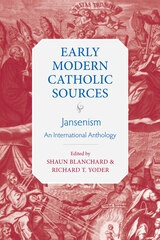 Jansenism: An International Anthology
Shaun Blanchard
Catholic University of America Press, 2024 Jansenism: An International Anthology is the first comprehensive anthology of Jansenist texts in English translation. Covering the full sweep of the Jansenist movement from the 1630s until the early nineteenth century, this anthology is a major asset to historians of early modernity, theologians, advanced and beginner students, and interested non-specialists. Readers of English can now directly hear the voices of the women and men, nuns and priests, and politicians and pamphleteers embroiled in some of the most dynamic controversies of early modern Christianity.
While giving due attention to France, the anthology showcases the geographic breadth of Jansenism, from Portugal to Lebanon. Consequently, a team of translators have provided texts translated not just from French and Latin; selections from German, Spanish, Portuguese, Italian, and Arabic also appear here. Blanchard and Yoder present a diverse range of texts, including letters, tracts, periodical excerpts, books, treatises, and synodal documents.
These readings cover the controversies over divine grace and penance for which Jansenism is infamous, but they also show the widening scope of Jansenists’ reformist concerns as the movement developed and changed. They address issues such as liturgical reform, devotion to Mary and the saints, politics, religious toleration, prayer, gender and the role of women in the Church, polemics, and ecclesiastical reform. The whole volume is introduced by an essay introducing Jansenism, exposing the important themes, summarizing the relevant scholarship, and contextualizing the content that will follow.
Jansenism: An International Anthology provides the first port-of-call for the study of Jansenism in English. The anthology presents a diverse and rich selection of primary source texts and draws on the best recent research into the fascinating and controversial transnational phenomena called “Jansenism.”
The Janus Face of the German Avant-Garde: From Expressionism Toward Postmodernism
Rainer Rumold
Northwestern University Press, 2002 Among the avant-garde of the early twentieth century, the German movement remains one of the least understood in the current avant-garde and modernism debates. Rainer Rumold fills this gap with the first large-scale reassessment of the heyday and afterlife of German expressionist and Dada productions as a prolonged crisis of literary culture.
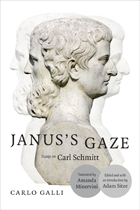 Janus's Gaze: Essays on Carl Schmitt
Carlo Galli
Duke University Press, 2015 First published in Italian in 2008 and appearing here in English for the first time, Janus's Gaze is the culmination of Carlo Galli's ongoing critique of the work of Carl Schmitt. Galli argues that Schmitt's main accomplishment, as well as the thread that unifies his oeuvre, is his construction of a genealogy of the modern that explains how modernity's compulsory drive to achieve order is both necessary and impossible. Galli addresses five key problems in Schmitt's thought: his relation to the state, the significance of his concept of political theology, his readings of Machiavelli and Spinoza, his relation to Leo Strauss, and his relevance for contemporary political theory. Galli emphasizes the importance of passing through Schmitt’s thought—and, more important, beyond Schmitt’s thought—if we are to achieve insight into the problems of the global age. Adam Sitze provides an illuminating introduction to Schmitt and Galli's reading of him.
 Japan After Japan: Social and Cultural Life from the Recessionary 1990s to the Present
Tomiko Yoda and Harry Harootunian, eds.
Duke University Press, 2006 The prolonged downturn in the Japanese economy that began during the recessionary 1990s triggered a complex set of reactions both within Japan and abroad, reshaping not only the country’s economy but also its politics, society, and culture. In Japan After Japan, scholars of history, anthropology, literature, and film explore the profound transformations in Japan since the early 1990s, providing complex analyses of a nation in transition, linking its present to its past and connecting local situations to global developments. Several of the essayists reflect on the politics of history, considering changes in the relationship between Japan and the United States, the complex legacy of Japanese colonialism, Japan’s chronic unease with its wartime history, and the postwar consolidation of an ethnocentric and racist nationalism. Others analyze anxieties related to the role of children in society and the weakening of the gendered divide between workplace and home. Turning to popular culture, contributors scrutinize the avid consumption of “real events” in formats including police shows, quiz shows, and live Web camera feeds; the creation, distribution, and reception of Pokémon, the game-based franchise that became a worldwide cultural phenomenon; and the ways that the behavior of zealous fans of anime both reinforces and clashes with corporate interests. Focusing on contemporary social and political movements, one essay relates how a local citizens’ group pressed the Japanese government to turn an international exposition, the Aichi Expo 2005, into a more environmentally conscious project. Another essay offers both a survey of emerging political movements and a manifesto identifying new possibilities for radical politics in Japan. Together the contributors to Japan After Japan present much-needed insight into the wide-ranging transformations of Japanese society that began in the 1990s. Contributors. Anne Allison, Andrea G. Arai, Eric Cazdyn, Leo Ching, Harry Harootunian, Marilyn Ivy, Sabu Kohso, J. Victor Koschmann, Thomas LaMarre, Masao Miyoshi, Yutaka Nagahara, Naoki Sakai, Tomiko Yoda, Yoshimi Shunya, Mitsuhiro Yoshimoto
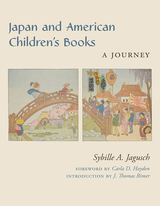 Japan and American Children's Books: A Journey
Sybille Jagusch
Rutgers University Press, 2021 For generations, children’s books provided American readers with their first impressions of Japan. Seemingly authoritative, and full of fascinating details about daily life in a distant land, these publications often presented a mixture of facts, stereotypes, and complete fabrications.
This volume takes readers on a journey through nearly 200 years of American children’s books depicting Japanese culture, starting with the illustrated journal of a boy who accompanied Commodore Matthew Perry on his historic voyage in the 1850s. Along the way, it traces the important role that representations of Japan played in the evolution of children’s literature, including the early works of Edward Stratemeyer, who went on to create such iconic characters as Nancy Drew. It also considers how American children’s books about Japan have gradually become more realistic with more Japanese-American authors entering the field, and with texts grappling with such serious subjects as internment camps and the bombing of Hiroshima and Nagasaki.
Drawing from the Library of Congress’s massive collection, Sybille A. Jagusch presents long passages from many different types of Japanese-themed children’s books and periodicals—including travelogues, histories, rare picture books, folktale collections, and boys’ adventure stories—to give readers a fascinating look at these striking texts. Published by Rutgers University Press, in association with the Library of Congress.
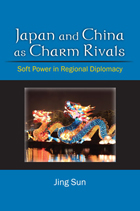 Japan and China as Charm Rivals: Soft Power in Regional Diplomacy
Jing Sun
University of Michigan Press, 2013 In international relations today, influence is as essential as military and economic might. Consequently, leaders promote favorable images of the state in order to attract allies and win support for their policies. Jing Sun, an expert on international relations and a former journalist, refers to such soft power campaigns as "charm offensives." Sun focuses on the competition between China and Japan for the allegiance of South Korea, Taiwan, and other states in the region. He finds that, instead of adopting a one-size-fits-all approach, the Chinese and the Japanese deploy customized charm campaigns for each target state, taking into consideration the target's culture, international position, and political values. He then evaluates the effectiveness of individual campaigns from the perspective of the target state, on the basis of public opinion polls, media coverage, and the response from state leaders. A deep, comparative study, Japan and China as Charm Rivalsenriches our understanding of soft power by revealing deliberate image campaign efforts and offering a method for assessing the effectiveness of such charm offensives.
 Japan and Japonisme: The Self and the Other in Representations of Japanese Culture
Noriko Murai
Amsterdam University Press, 2025 Japan and Japonisme: The Self and the Other in Representations of Japanese Culture explores Japan’s engagement with and responses to Japonisme, and presents new perspectives on the history and enduring influence of Japonisme as a cultural discourse. The term “Japonisme” has come to encapsulate the West’s interests in Japanese arts and culture in the late nineteenth and early twentieth centuries. Japonisme contributed to Japan’s global reputation as an artistic nation, but it also produced persistent stereotypes about the Japanese, such as the image of “geisha.” This pioneering anthology also demonstrates how Japan has espoused the modern Western fascination with its arts and culture to create and promote its national cultural identity. Japan and Japonisme introduces innovative studies on Japonisme by leading experts in the field, and covers the visual arts, art criticism and exhibitions, fashion, literature, horticulture, and popular culture in France, Italy, the United Kingdom, and the United States.
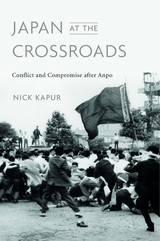 Japan at the Crossroads: Conflict and Compromise after Anpo
Nick Kapur
Harvard University Press, 2018 In spring of 1960, Japan’s government passed Anpo, a revision of the postwar treaty that allows the United States to maintain a military presence in Japan. This move triggered the largest popular backlash in the nation’s modern history. These protests, Nick Kapur argues in Japan at the Crossroads, changed the evolution of Japan’s politics and culture, along with its global role.
The yearlong protests of 1960 reached a climax in June, when thousands of activists stormed Japan’s National Legislature, precipitating a battle with police and yakuza thugs. Hundreds were injured and a young woman was killed. With the nation’s cohesion at stake, the Japanese government acted quickly to quell tensions and limit the recurrence of violent demonstrations. A visit by President Eisenhower was canceled and the Japanese prime minister resigned. But the rupture had long-lasting consequences that went far beyond politics and diplomacy. Kapur traces the currents of reaction and revolution that propelled Japanese democracy, labor relations, social movements, the arts, and literature in complex, often contradictory directions. His analysis helps resolve Japan’s essential paradox as a nation that is both innovative and regressive, flexible and resistant, wildly imaginative yet simultaneously wedded to tradition.
As Kapur makes clear, the rest of the world cannot understand contemporary Japan and the distinct impression it has made on global politics, economics, and culture without appreciating the critical role of the “revolutionless” revolution of 1960—turbulent events that released long-buried liberal tensions while bolstering Japan’s conservative status quo.
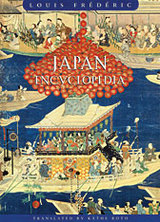 Japan Encyclopedia
Louis FrédéricTranslated by Käthe Roth
Harvard University Press, 2002 "Knowing Japan and the Japanese better," Louis Frédéric states in the introduction to this encyclopedia, "is one of the necessities of modern life." The Japanese have a profound knowledge of every aspect and detail of Western societies. Unfortunately, we in the West cannot say the same about our knowledge of Japan. We tend to see Japan through a veil of exoticism, as a land of ancient customs and exquisite arts; or we view it as a powerful contributor to the global economy, the source of cutting-edge electronics and innovative management techniques. To go beyond these clichés, we must begin to see how apparently contradictory aspects of modern Japanese culture spring from the country's evolution through more than two millennia of history.
This richly detailed yet concise encyclopedia is a guide to the full range of Japanese history and civilization, from the dawn of its prehistory to today, providing clear and accessible information on society and institutions, commerce and industry, sciences, sports, and politics, with particular emphasis on religion, material culture, and the arts. The volume is enhanced by maps and illustrations, along with a detailed chronology of more than 2,000 years of Japanese history and a comprehensive bibliography. Cross-references and an index help the reader trace themes from one article to the next.
Japan Encyclopedia will be an indispensable one-volume reference for students, scholars, travelers, journalists, and anyone who wishes to learn more about the past and present of this great world civilization.
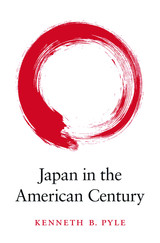 Japan in the American Century
Kenneth B. Pyle
Harvard University Press, 2018 No nation was more deeply affected by America’s rise to world power than Japan. President Franklin Roosevelt’s uncompromising policy of unconditional surrender led to the catastrophic finale of the Asia-Pacific War and the most intrusive international reconstruction of another nation in modern history. Japan in the American Century examines how Japan, with its deeply conservative heritage, responded to the imposition of a new liberal order.
The price Japan paid to end the occupation was a cold war alliance with the United States that ensured America’s dominance in the region. Still traumatized by its wartime experience, Japan developed a grand strategy of dependence on U.S. security guarantees so that the nation could concentrate on economic growth. Yet from the start, despite American expectations, Japan reworked the American reforms to fit its own circumstances and cultural preferences, fashioning distinctively Japanese variations on capitalism, democracy, and social institutions.
Today, with the postwar world order in retreat, Japan is undergoing a sea change in its foreign policy, returning to an activist, independent role in global politics not seen since 1945. Distilling a lifetime of work on Japan and the United States, Kenneth Pyle offers a thoughtful history of the two nations’ relationship at a time when the character of that alliance is changing. Japan has begun to pull free from the constraints established after World War II, with repercussions for its relations with the United States and its role in Asian geopolitics.
 Japan in the World
Masao Miyoshi and H. D. Harootunian, eds.
Duke University Press, 1993 Since the end of World War II, Japan has determinately remained outside the current of world events and uninvolved in the processes determining global history and politics. In Japan and the World, distinguished scholars, novelists, and intellectuals articulate how Japan—despite unprecedented economic prowess in securing dominance in the world's market—is caught in a complex dependency with the United States. Drawing on critical and postmodernist theory, this timely volume situates this dependency in a broader historical context and assesses Japan's current dealings in international politics, society, and culture.
Among the many topics covered are: racism in U.S.-Japanese relations; productivity and workplace discourse; Western cultural hegemony; the constructing of a Japanese cultural history; and the place of the novelist in today's world. Originally published as a special issue of boundary 2 (Fall 1991), this edition includes four new essays on Japanese industrial revolution; the place of English studies in Japan; how American cultural, historical, and political discourse represented Japan and in turn how America's version of Japan became Japan's version of itself; and an "archaeology" of hegemonic relationships between Japan and America and Britain in the first half of the twentieth century.
Contributors. Eqbal Ahmad, Perry Anderson, Bruce Cumings, Arif Dirlik, H.D. Harootunian, Kazuo Ishuro, Fredric Jameson, Kojin Karatani, Oe Kenzaburo, Masao Miyoshi, Tetsuo Najita, Leslie Pincus, Naoki Sakai, Miriam Silverberg, Christena Turner, Rob Wilson, Mitsuhiro Yoshimoto
Japan in the World, the World in Japan: Fifty Years of Japanese Studies at Michigan
Edited by the Center for Japanese Studies, University of Michigan
University of Michigan Press, 2001 In fall 1997 the Center for Japanese Studies at The University of Michigan celebrated its fiftieth anniversary. The November symposium featured more than fifty speakers, moderators, and musicians who celebrated the occasion and offered reminiscences on the Center's multifaceted scholarly and professional missions, discussions of the accomplishments of its al-umni/ae, and perspectives on wartime and postwar Japan-U.S. relations. As the first American interdisciplinary institute devoted to education and research on Japan, The University of Michigan Center for Japanese Studies has a path-making legacy. This volume, which includes the public presentations from the November 1997 symposium, reflects that legacy and the university's long and continuing involvement in Asia, which dates back to the 1870s.
 The Japan of Pure Invention: Gilbert and Sullivan’s The Mikado
Josephine Lee
University of Minnesota Press, 2010 Long before Sofia Coppola’s Lost in Translation, long before Barthes explicated his empire of signs, even before Puccini’s Madame Butterfly, Gilbert and Sullivan’s The Mikadopresented its own distinctive version of Japan. Set in a fictional town called Titipu and populated by characters named Yum-Yum, Nanki-Poo, and Pooh-Bah, the opera has remained popular since its premiere in 1885. Tracing the history of The Mikado’s performances from Victorian times to the present, Josephine Lee reveals the continuing viability of the play’s surprisingly complex racial dynamics as they have been adapted to different times and settings. Lee connects yellowface performance to blackface minstrelsy, showing how productions of the 1938–39 Swing Mikado and Hot Mikado, among others, were used to promote African American racial uplift. She also looks at a host of contemporary productions and adaptations, including Mike Leigh’s film Topsy-Turvy and performances of The Mikado in Japan, to reflect on anxieties about race as they are articulated through new visions of the town of Titipu. The Mikado creates racial fantasies, draws audience members into them, and deftly weaves them into cultural memory. For countless people who had never been to Japan, The Mikado served as the basis for imagining what “Japanese” was.
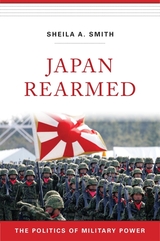 Japan Rearmed: The Politics of Military Power
Sheila A. Smith
Harvard University Press, 2019 Japan’s U.S.–imposed postwar constitution renounced the use of offensive military force, but, as Sheila Smith shows, a nuclear North Korea and an increasingly assertive China have the Japanese rethinking that commitment, and their reliance on United States security.
Japan has one of Asia’s most technologically advanced militaries and yet struggles to use its hard power as an instrument of national policy. The horrors of World War II continue to haunt policymakers in Tokyo, while China and South Korea remain wary of any military ambitions Japan may entertain. Yet a fundamental shift in East Asian geopolitics has forced Japan to rethink the commitment to pacifism it made during the U.S. occupation. It has increasingly flexed its muscles—deploying troops under UN auspices, participating in coercive sanctions, augmenting surveillance capabilities, and raising defense budgets.
Article Nine of Japan’s constitution, drafted by U.S. authorities in 1946, claims that the Japanese people “forever renounce the use of force as a means of settling international disputes.” When Prime Minister Shinzo Abe broke this taboo by advocating revision of Article Nine, public outcry was surprisingly muted. The military, once feared as a security liability, now appears to be an indispensable asset, called upon with increasing frequency and given a seat at the policymaking table.
In Japan Rearmed Sheila Smith argues that Japan is not only responding to increasing threats from North Korean missiles and Chinese maritime activities but also reevaluating its dependence on the United States. No longer convinced that they can rely on Americans to defend Japan, Tokyo’s political leaders are now confronting the possibility that they may need to prepare the nation’s military for war.
 Japan Rearmed: The Politics of Military Power
Sheila A. Smith
Harvard University Press “Washington’s relationship with Tokyo is generally considered the most important of the United States’ 70-odd alliances. In this intimately knowledgeable book, Smith shows how that alliance looks to the Japanese: increasingly unreliable.”—Andrew J. Nathan, Foreign Affairs
“Masterfully traces the interplay of Japan’s military heritage, politics, national sentiment, threats, and alliance with the United States in the formation and development of the Self-Defense Force. Even experts will find new information and insights.”—Admiral Dennis Blair, US Navy (Ret.), former Commander-in-Chief, US Pacific Command
“A must-read for US policymakers responsible for Asia.” —J. Thomas Schieffer, former US Ambassador to Japan
“A highly readable and richly detailed account of Japan’s rearmament and the politics surrounding it.”—Journal of American–East Asian Relations
Japan has one of Asia’s most technologically advanced militaries, yet it has struggled to use its hard power as an instrument of national policy. The horrors of World War II continue to haunt policymakers in Tokyo, but a fundamental shift in East Asian geopolitics has forced Japan to rethink its commitment to pacifism. Its military, once feared as a security liability, now appears to be an indispensable asset.
In Japan Rearmed, Sheila Smith argues that Japan is not only responding to threats from North Korean missiles and Chinese maritime activities, it is fundamentally reevaluating its dependence on the United States as its leaders confront the very real possibility that they may soon need to prepare for war.
Japan: The Intellectual Foundations of Modern Japanese Politics
Tetsuo Najita
University of Chicago Press, 1980 Historians have long been aware of the richness and complexity of the intellectual history of modern Japanese politics. Najita's study, however, is the first in a Western language to present a consistent and broad synthesis of this subject. Najita elucidates the political dynamics of the past two hundred years of Japanese history by focusing on the interplay of restorationism and bureaucratism within the context of Japan's modern revolution, the Meiji Restoration.
The Japanese
Edwin O. Reischauer
Harvard University Press, 1977
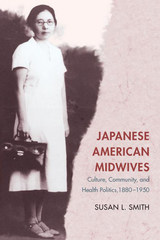 Japanese American Midwives: Culture, Community, and Health Politics, 1880-1950
Susan L. Smith
University of Illinois Press, 2005 In the late nineteenth century, Japan's modernizing quest for empire transformed midwifery into a new woman's profession. With the rise of Japanese immigration to the United States, Japanese midwives (sanba) served as cultural brokers as well as birth attendants for Issei women. They actively participated in the creation of Japanese American community and culture as preservers of Japanese birthing customs and agents of cultural change. Japanese American Midwives reveals the dynamic relationship between this welfare state and the history of women and health. Susan L. Smith blends midwives' individual stories with astute analysis to demonstrate the impossibility of clearly separating domestic policy from foreign policy, public health from racial politics, medical care from women's caregiving, and the history of women and health from national and international politics. By setting the history of Japanese American midwives in this larger context, Smith reveals little-known ethnic, racial, and regional aspects of women's history and the history of medicine.
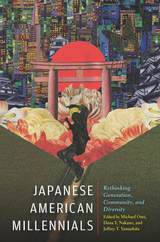 Japanese American Millennials: Rethinking Generation, Community, and Diversity
Michael Omi
Temple University Press, 2019 Whereas most scholarship on Japanese Americans looks at historical case studies or the 1.5 generation assimilating, this pioneering anthology, Japanese American Millennials, captures theexperiences, perspectives, and aspirations of Asian Americans born between 1980 and 2000. The editors and contributors present multiple perspectives on who Japanese Americans are, how they think about notions of community and culture, and how they engage and negotiate multiple social identities. The essays by scholars both in the United States and Japan draw upon the Japanese American millennial experience to examine how they find self-expression in Youth Basketball Leagues or Christian youth camps as well as how they grapple with being mixed-race, bicultural, or queer. Featuring compelling interviews and observations, Japanese American Millennials dislodges the dominant generational framework toaddress absences in the current literature and suggests how we might alternatively study Japanese Americans as a whole.
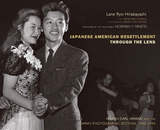 Japanese American Resettlement through the Lens: Hikaru Iwasaki and the WRA's Photographic Section, 1943-1945
Lane Ryo Hirabayashi
University Press of Colorado, 2009 Photographs by Hikaru C. IwasakiForeword by the Honorable Norman Y. Mineta
In Japanese American Resettlement through the Lens, Lane Ryo Hirabayashi gathers a unique collection of photographs by War Relocation Authority photographer Hikaru Iwasaki, the only full-time WRA photographer from the period still living.
With substantive focus on resettlement - and in particular Iwasaki's photos of Japanese Americans following their release from WRA camps from 1943 to 1945 - Hirabayashi explores the WRA's use of photography in its mission not only to encourage "loyal" Japanese Americans to return to society at large as quickly as possible but also to convince Euro-Americans this was safe and advantageous. Hirabayashi also assesses the relative success of the WRA project, as well as the multiple uses of the photographs over time, first by the WRA and then by students, scholars, and community members in the present day.
Although the photos have been used to illustrate a number of publications, this book is the first sustained treatment addressing questions directly related to official WRA photographs. How and under what conditions were they taken? Where were they developed, selected, and stored? How were they used during the 1940s? What impact did they have during and following the war?
By focusing on the WRA's Photographic Section, Japanese American Resettlement through the Lens makes a unique contribution to the body of literature on Japanese Americans during World War II.
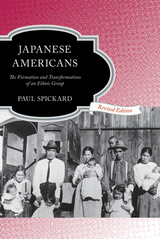 Japanese Americans: The Formation and Transformations of an Ethnic Group
Spickard, Paul
Rutgers University Press, 2008 Since 1855, nearly a half a million Japanese immigrants have settled in the United States, the majority arriving between 1890 and 1924 during the great wave of immigration to Hawai'i and the mainland. Today, more than one million Americans claim Japanese ancestry. They came to study and to work, and found jobs as farm laborers, cannery workers, and railroad workers. Many settled permanently, formed communities, and sent for family members in Japan. While they worked hard, established credit associations and other networks, and repeatedly distinguished themselves as entrepreneurs, they also encountered harsh discrimination. Nowhere was this more evident than on the West coast during World War II, when virtually the entire population of Japanese Americans was forced into internment camps solely on the basis of their ethnicity. In this concise history, Paul Spickard traces the struggles and achievements of Japanese Americans in claiming their place in American society. He outlines three forces shaping ethnic groups in general: shared interests, shared institutions, and shared culture, and chronicles the Japanese American experience within this framework, showing how these factors created and nurtured solidarity.
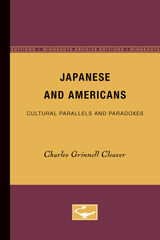 Japanese and Americans: Cultural Parallels and Paradoxes
Charles Cleaver
University of Minnesota Press, 1976
Japanese and Americans was first published in 1976.Long periods of residence, study, and teaching in Japan have given Professor Cleaver an opportunity to observe its culture and to compare it with that of the United States, where he is a specialist in American studies. He reaches the conclusion that differences in the two cultures have been emphasized so much that similarities have been overlooked. Further, he points out, when differences have been discovered, a moral judgment has often been implied. In this book he provides a balanced view which will, it is hoped, contribute to a better understanding between the two countries.Since an exhaustive comparison of the two cultures is out of the question within the limits of a single volume, he has chosen the method of an oil prospector, drilling down here and there, where science or hunch suggests there might be a payoff. In his study he uses the word culture in the manner of the anthropologist as meaning the whole way of life. He places more emphasis, however, than the ordinary anthropologist does on the clues which the arts provide. Thus, among the subjects he discusses at some length are fictional writing and architecture. Among his other subjects are political and military nationalism, international economic reputations of the two countries, attitudes toward nature, and the organization of work and leisure. In his concluding chapter he discusses current tendencies toward local and international loyalties as opposed to those which are national, and the growing interest in cultural nationalism which accompanies a distrust of political and military nationalism. Finally, he makes a plea for an international community with cultural diversity.
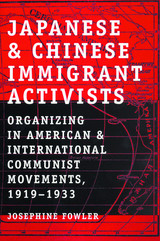 Japanese and Chinese Immigrant Activists: Organizing in American and International Communist Movements, 1919–1933
Fowler, Josephine
Rutgers University Press, 2007 Japanese and Chinese immigrants in the United States have traditionally been characterized as hard workers who are hesitant to involve themselves in labor disputes or radical activism. How then does one explain the labor and Communist organizations in the Asian immigrant communities that existed from coast to coast between 1919 and 1933? Their organizers and members have been, until now, largely absent from the history of the American Communist movement. In Japanese and Chinese Immigrant Activists, Josephine Fowler brings us the first in-depth account of Japanese and Chinese immigrant radicalism inside the United States and across the Pacific.
Drawing on multilingual correspondence between left-wing and party members and other primary sources, such as records from branches of the Japanese Workers Association and the Chinese Nationalist Party, Fowler shows how pressures from the Comintern for various sub-groups of the party to unite as an “American” working class were met with resistance. The book also challenges longstanding stereotypes about the relationships among the Communist Party in the United States, the Comintern, and the Soviet Party.
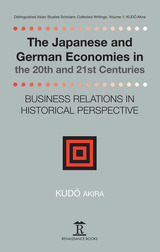 The Japanese and German Economies in the 20th and 21st Centuries: Business Relations in Historical Perspective
Kudo Akira
Amsterdam University Press, 2018 Supported by a number of high-profile case studies, this volume offers a comprehensive exploration of Japanese-German economic relations through the whole of the twentieth and beginning of the twenty-first centuries. It also offers clarification on the structure and processes of the world economy in the same period. Drawing on both unpublished discussion papers as well as previously published essays, the reader will find much of interest in the wide-ranging scholarship contained in this work, structured as follows: Part I, Japanese-German Business Relations; Part II, Trajectory of Japanese-German Business Relations; Part III, The Japanese and European Business and Economies. A Foreword by YUZAWA Takeshi, Professor Emeritus, Gakushuin University, Tokyo, evaluates the relevance and significance of Professor Kudo’s lifetime research and scholarship in the context of German-Japanese relations.
 Japanese Art in Detail
John Reeve
Harvard University Press, 2005 Beginning by asking, “What is Japanese art?” this book supplies an answer so broad in its reach, so rich in detail, and so extensively illustrated as to give a reader not just a true picture, but also a fine understanding, of Japanese art. Arranged thematically, the book includes chapters on nature and pleasure, landscape and beauty, all framed by the themes of serenity and turmoil, the two poles of Japanese culture ancient and modern. Highlighting—close up and in color—outstanding examples of design and craft in prints, paintings and screens, metalwork, ceramics, wood, stone, and lacquer, Japanese Art in Detail presents each image alongside enlarged details--details that otherwise might be virtually invisible to the naked eye--thus affording intriguing comparisons between seemingly unrelated pieces. Throughout, John Reeve provides cultural context while pointing out exceptional features.
Though drawn from one extraordinary source—the British Museum—the specific objects pictured here are representative of many others in public and private collections worldwide, and offer a clear idea, both broad and particular, of what constitutes Japanese art. Most of these images, as well as many of those mentioned, are accessible electronically through the British Museum's online database, as are several tours linked to recent exhibits.
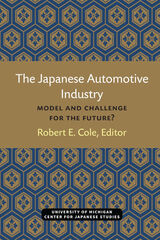 The Japanese Automotive Industry: Model and Challenge for the Future?
Robert E. Cole, Editor
University of Michigan Press, 1981 As the University of Michigan Center for Japanese Studies reflected on the deteriorating position of the domestic auto industry in the fall of 1980, and the strong competitive threat being posed by the Japanese automakers, we were struck by the extraordinary low quality of the public discussion of these critical issues. The national importance of the issues seemed only matched by the superficiality of the analyses being offered. The tendency to think in terms of scapegoats was particularly evident. The Japanese as the basic cause of our problems has been a particularly notable theme. To be sure, cooperation with the Japanese in formulating a rational overall trade policy may be an important part of the solution. It has also been fashionable to blame it all on American auto industry management for not concentrating on the production of small cars when "everyone knew" that was the thing to do. Alternatively, government meddling was blamed for all our problems. Clearly, the complex problem we faced required more penetrating analyses. It seemed therefore, that the time was ripe for a public seminar which moved beyond the rhetoric of the moment and probed some of the deeper causes of our problems and possible directions for future policy. In holding the January 1981 auto conference, the Center took it as their task to begin addressing the critical issues facing the industry, with particular, but not exclusive, attention to examining the role of the Japanese auto industry. They had in mind not to simply conduct a rational discussion of the trade issue but to probe the sources of Japanese competitive strength, especially those features whose study might profit them. In these proceedings, they bring those discussions to a wider audience. Question and answer sessions at the conference were necessarily short and a few speakers delivered abbreviated remarks; this volume restores a number of omissions, and provides additional answers to some pertinent questions put by the audience. The Center hopes to encourage the serious problem-solving these complex issues demand. Far too much time has been spent trying to fix the blame. [intro]
 Japanese Brazilian Saudades: Diasporic Identities and Cultural Production
Ignacio López-Calvo
University Press of Colorado, 2019 Japanese Brazilian Saudades explores the self-definition of Nikkei discourse in Portuguese-language cultural production by Brazilian authors of Japanese ancestry. Ignacio López-Calvo uses books and films by twentieth-century Nikkei authors as case studies to redefine the ideas of Brazilianness and Japaneseness from both a national and a transnational perspective. The result suggests an alternative model of postcoloniality, particularly as it pertains to the post–World War II experience of Nikkei people in Brazil.
López-Calvo addresses the complex creation of Japanese Brazilian identities and the history of immigration, showing how the community has used writing as a form of reconciliation and affirmation of their competing identities as Japanese, Brazilian, and Japanese Brazilian. Japanese in Brazil have employed a twofold strategic, rhetorical engineering: the affirmation of ethno-cultural difference on the one hand, and the collective assertion of citizenship and belonging to the Brazilian nation on the other. López-Calvo also grapples with the community’s inclusion and exclusion in Brazilian history and literature, using the concept of “epistemicide” to refer to the government’s attempt to impose a Western value system, Brazilian culture, and Portuguese language on the Nikkeijin, while at the same time trying to destroy Japanese language and culture in Brazil by prohibiting Japanese language instruction in schools, Japanese-language publications, and even speaking Japanese in public.
Japanese Brazilian Saudades contributes to the literature criticizing the “cognitive injustice” that fails to acknowledge the value of the global South and non-Western ways of knowing and being in the world. With important implications for both Latin American studies and Nikkei studies, it expands discourses of race, ethnicity, nationality, and communal belonging through art and narrative.
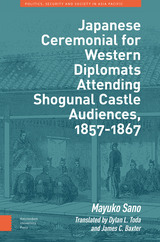 Japanese Ceremonial for Western Diplomats Attending Shogunal Castle Audiences, 1857-1867
Mayuko Sano
Amsterdam University Press, 2024 The formal diplomatic relations between Japan and Western nations dawned when the first American consul-general Townsend Harris was received by the thirteenth Tokugawa shogun Iesada at Edo castle in 1857. —This work unveils the seventeen castle audiences for Western envoys carried out by the Tokugawa shogunate (1603-1867) during its last decade of reign. Through that process, the shogunate completed a ceremonial form based on its own tradition, as well as consistent with the Western practice. The endeavours of Tokugawa retainers on the frontline of external affairs at the time¬.prior to the Meiji Restoration (1868).was the true first step of Japan’s entry into the international community. The formation of diplomatic ceremonial, progressed as a different layer from more political negotiations, provides an alternative history of bakumatsu (late years of the shogunate) foreign relations that has been overlooked in previous studies.
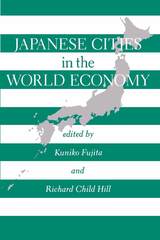 Japanese Cities
edited by Kuniko Fujita and Richard Child Hill
Temple University Press, 1993 Japan is the world's second most powerful economy and one of the most urbanized nations on earth. Yet English-language literature contains remarkable little about cities in Japan. This collection of original essays on Japanese urban and industrial development covers a broad spectrum of city experiences. Leading Japanese and Western urbanists analyze Japan's largest metropolitan areas (Tokyo, Osaka, Nagoya); proto-typical industrial cities (Kamaishi, Kitakyushu, Toyota); high technology urban satellites (Kanagawa); and smaller, more traditionally organized industrial districts (Tsubame). This book demonstrates how Japan's flexible economic growth strategies and changing relationship to the world economy have produced a uniquely Japanese pattern of urban development in this century. Throughout the essays that describe individual cities, contributors provide commentary on each city's twentieth-century history and functional relations with other cities and focus on the dynamic linkage between global relations and local activities. They examine the role of government—central, prefectural, and local—in the restructuring of Japanese industrial and urban life. One essay is devoted to the urbanization process in pre-World War II Japan; another considers urban planning on the western Pacific Rim. This is the first book that analyzes how the economic transformation of Japan has restructured Japanese cities and how urban and regional development policies have kept pace with (and in some ways effected) changes in the economy. This comprehensive study of Japanese cities provides interdisciplinary coverage of urban development issues of interest to the fields of economics, business, sociology, political science, history, Asian and Japanese studies, and urban planning.
Japanese Civilization: A Comparative View
S. N. Eisenstadt
University of Chicago Press, 1996 S. N. Eisenstadt, one of the world's leading social theorists, provides a monumental synthesis of Japanese history, religion, culture, and social organization. Equipped with a thorough command of the literature, Eisenstadt explores the Japanese historical legacy and its impact on the Japanese experience of modernity. Eschewing the polemicism of structuralist or culturalist approaches, he expands his investigative framework to include a keenly systematic, broadly comparative analysis. What emerges is an innovative new construction, focusing on the nonideological character of Japanese civilization as well as its infinite capacity to recreate community through an ongoing past.
 Japanese Colonial Education in Taiwan, 1895–1945
E. Patricia Tsurumi
Harvard University Press, 1977 Japan was the only non-Western colonial power in the pre–World War II world. Yet studies of Japanese colonialism are, for the most part, still in an embryonic stage. For too long critical investigation of the broad problem of the Japanese colonial empire—its development and character—has been neglected by both scholars of East Asian history and those of comparative colonial systems. How much was the Japanese administration of Taiwan like French, Dutch, British, or American rule in other parts of Asia? How closely did the actions taken by the colonial governments resemble the patterns of governmental initiative in the home islands established by the Meiji politicians and their successors? What is the effect of colonization on the mental and physical condition of people who are colonized?
This study of Japanese colonialism in Japan’s first overseas acquisition, Taiwan, approaches these questions through an analysis of a central pillar of Japanese rule there—education—which performed key functions in keeping order, exploiting economic resources, securing the cooperation of the natives, and attempting to assimilate them. Using a vast amount of material meticulously and judiciously, the author gives us provocative, convincing, and significant answers to these questions and makes an important contribution to the study of modern East Asian history and comparative colonialism.
 Japanese Corrections: Managing Convicted Offenders in an Orderly Society
Elmer H. Johnson
Southern Illinois University Press, 1996
In his analysis of the current Japanese corrections system, internationally respected criminologist Elmer H. Johnson focuses on three basic questions: What are the characteristics of the major programmatic elements? How do various personnel carry out their programmatic responsibilities? Why are the various duties and activities carried out in a particular way?
Johnson points out that compared with the United States, where prison populations are huge and often violent, Japan incarcerates relatively few criminals. In 1989, for example, Japan locked up only 34 out of every 100,000 citizens while the United States imprisoned people at a rate of 271 per 100,000. Examining the cultural differences leading to this disparity, Johnson notes that in Japan prosecutors are reluctant to refer defendants for trial and the courts often suspend sentences for convicted felons.
In Japan, two bureaus—the Correction Bureau and the Rehabilitation Bureau—administer all Japanese correctional activities. Placing these bureaus in the organizational scheme of the Ministry of Justice, Johnson traces the history, describes the organizational ideologies, and outlines the special features of each.
A central feature of the Japanese penal system is the industrial prison, a concept that met such fierce opposition in the United States that it lost almost all access to the free market by the 1940s. Johnson traces the history of the industrial prison, noting particularly that the industrial operations in adult institutions explain in part why there is almost no violence and why few try to escape. Juvenile institutions enjoy similar success; even though they produce no industrial products, the juvenile training schools emphasize education, vocational training, and counseling.
Japanese correctional officers rely heavily on the community and on unsalaried volunteer probation officers for supervision of probationers and parolees. Although Japanese courts regard probationary supervision as too punitive for most convicted defendants and return many to the community without supervision, the probation caseload is weighty. Johnson describes the responsibilities and operations of the Regional Parole Boards. He also discusses the aid hostels (halfway houses) that are primarily operated by private organizations and that serve released or paroled prisoners.
Johnson sums up by noting that both the Correction Bureau and the Rehabilitation Bureau depend on the overall operations of police, prosecutors, and judges. More broadly, he asserts, both bureaus are creatures of Japanese society and culture. The assets and disadvantages of the bureaus reflect society’s reluctance to sentence defendants to prison and, to a lesser extent, the reluctance to place them on probationary supervision.
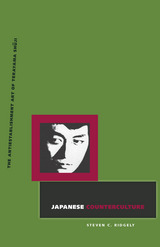 Japanese Counterculture: The Antiestablishment Art of Terayama Shuji
Steven C. Ridgely
University of Minnesota Press, 2010 Terayama Shuji (1935-1983) was an avant-garde Japanese poet, dramatist, film director, and photographer known for his highly provocative work. In this inventive and revealing work, Steven Ridgely examines Terayama's life and art to show that a conventional notion of him does not do full justice to the meaning and importance of his wide-ranging, often playful body of work.
Ridgely places Terayama at the center of Japanese and global counterculture and finds in his work a larger story about the history of postwar Japanese art and culture. He sees Terayama as reflecting the most significant events of his day: young poets seizing control of haiku and tanka in the 1950s, radio drama experimenting with form and content after the cultural shift to television around 1960, young assistant directors given free rein in the New Wave as cinema combated television, underground theatre in the politicized late 1960s, and experimental short film through the 1970s after both the studio system and art house cinema had collapsed.
Featuring close readings of Terayama's art, Ridgely demonstrates how across his oeuvre there are patterns that sidestep existing power structures, never offering direct opposition but nevertheless making the opposition plain. And, he claims, there is always in Terayama's work a broad call for seeking out or creating pockets of fiction-where we are made aware that things are not what they seem-and to use otherness in those spaces to take a clearer view of reality.
 Japanese Cultural Policy toward China, 1918–1931: A Comparative Perspective
See Heng Teow
Harvard University Press, 1999 Most existing scholarship on Japan’s cultural policy toward modern China reflects the paradigm of cultural imperialism. In contrast, this study demonstrates that Japan—while motivated by pragmatic interests, international cultural rivalries, ethnocentrism, moralism, and idealism—was mindful of Chinese opinion and sought the cooperation of the Chinese government. Japanese policy stressed cultural communication and inclusiveness rather than cultural domination and exclusiveness and was part of Japan’s search for an East Asian cultural order led by Japan. China, however, was not a passive recipient and actively sought to redirect this policy to serve its national interests and aspirations. The author argues that it is time to move away from the framework of cultural imperialism toward one that recognizes the importance of cultural autonomy, internationalism, and transculturation.
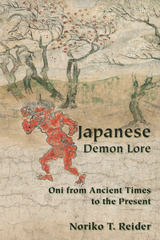 Japanese Demon Lore: Oni from Ancient Times to the Present
Noriko Reider
Utah State University Press, 2010 Oni, ubiquitous supernatural figures in Japanese literature, lore, art, and religion, usually appear as demons or ogres. Characteristically threatening, monstrous creatures with ugly features and fearful habits, including cannibalism, they also can be harbingers of prosperity, beautiful and sexual, and especially in modern contexts, even cute and lovable. There has been much ambiguity in their character and identity over their long history. Usually male, their female manifestations convey distinctivly gendered social and cultural meanings. Oni appear frequently in various arts and media, from Noh theater and picture scrolls to modern fiction and political propaganda, They remain common figures in popular Japanese anime, manga, and film and are becoming embedded in American and international popular culture through such media. Noriko Reiderýs book is the first in English devoted to oni. Reider fully examines their cultural history, multifaceted roles, and complex significance as "others" to the Japanese.
 Japanese Documentary Film: The Meiji Era Through Hiroshima
Abe Mark Nornes
University of Minnesota Press, 2003 Among Asian countries—where until recently documentary filmmaking was largely the domain of central governments—Japan was exceptional for the vigor of its nonfiction film industry. And yet, for all its aesthetic, historical, and political interest, the Japanese documentary remains little known and largely unstudied outside of Japan. This is the first English-language study of the subject, an enlightening close look at the first fifty years of documentary film theory and practice in Japan. Beginning with films made by foreigners in the nineteenth century and concluding with the first two films made after Japan’s surrender in 1945, Abé Mark Nornes moves from a “prehistory of the documentary,” through innovations of the proletarian film movement, to the hardening of style and conventions that started with the Manchurian Incident films and continued through the Pacific War. Nornes draws on a wide variety of archival sources—including Japanese studio records, secret police reports, government memos, letters, military tribunal testimonies, and more—to chart shifts in documentary style against developments in the history of modern Japan. Abé Mark Nornes is associate professor at the University of Michigan, where he teaches in the Department of Asian Languages and Cultures and the Program in Film and Video Studies.
Japanese Empire in the Tropics: Selected Documents and Reports of the Japanese Period in Sarawak, Northwest Borneo, 1941–1945
Ooi Keat Gin
Ohio University Press, 1997 Although the Japanese interregnum was brief, its dramatic commencement and equally dramatic conclusion represented a watershed in the history of the young state of Sarawak. In recent years, there has been a groundswell of interest in the war years, culminating in an attempt at reassessment of the Japanese occupation in Southeast Asia by Western and Japanese scholars as well as by those from Southeast Asia. Presented here in a two-volume edition is a history of the Japanese occupation of Sarawak narrated through the compelling testimonies of the actual participants based on their recollections, memoirs, and correspondence.
 A Japanese Encounter with Christianity: The Memoirs of Takeda Kiyoko
Takeda Kiyoko
Amsterdam University Press, 2025 Ch. Takeda Kiyoko (1917–2018), better known as Takeda Kiyoko (....), was a remarkable woman, whose life-course defied the stereotypes of modern Japanese women. Her memoirs focus on “encounters”—with the individuals whom Takeda met in her travels to Asia, the United States and Europe; through her involvement in organisations such as the YWCA and World Student Christian Federation (WSCF); and with the progressive Japanese thinkers that were the focus of her research (the response of thinkers of the modern period (from 1867) to Christianity). Some of these encounters were fleeting, others were more sustained. Regardless, the influence was enduring.
Takeda Kiyoko’s intellectual world expanded through her involvement with Christian organisations such as the YWCA and the WSCF, and when she went to the United States as an exchange student and worked at WSCF headquarters. Her involvement with the World Council of Churches also entailed extensive travel in Asia as well as Europe, and much engaged discussion on the future of ecumenicism. In the 1950s, she contributed to unofficial diplomacy between Japan and other Asian nations and to restoring friendly relations and mutual understanding between Japanese and other Asian people, including Chinese, Filipino, and Indian.
 The Japanese Experience in Indonesia: Selected Memoirs of 1942-1945
Anthony Reid
Ohio University Press, 1986 Although the wartime Japanese military administration of Indonesia was critical to the making of modern Indonesia, it remains shrouded in mystery, in part because of the systematic destruction of records following the Japanese surrender. These excerpts from personal memoirs of individual Japanese soldiers and administrators provide unique glimpses of the occupation—from the Japanese landing on Java and the Dutch surrender, to the independence proclamation in Jakarta, to the violence in Surabaya following the Japanese surrender. Through the eyes of Japanese at all levels of responsibility, we see the internal Indonesian turmoil, the struggle toward an independence movement, and the efforts of some Japanese to promote independence, despite the policies of imperial headquarters. Not only does this collection illuminate modern Indonesian history, it provides students of Japanese history with a feeling for the variety of Japanese responses to the war effort. The Japanese Experience in Indonesia will therefore be of interest to Southeast and East Asian historians and political scientists, as well as to those with a more general interest in World War II.
 Japanese Filmmakers in the Wake of Fukushima: Perspectives on Nuclear Disasters
Mitsuyo Wada-Marciano
Amsterdam University Press, 2023 n the ongoing aftermath of the nuclear accident in 2011, filmmakers have continued to issue warnings about the state of Japanese society and politics, which remain mired in refusal to change. Nearly a decade in the making, Japanese Filmmakers in the Wake of Fukushima is based on in-person interviews with countless filmmakers, as well as continuous dialogue with them and their work. Author Wada-Marciano has expanded these dialogues to include students, audiences at screenings, critics, and researchers, and her observations are based on down-to-earth-exchange of ideas engaged in over a long period of time.
Filmmakers and artists are in the vanguard of those who grapple with what should be done regarding the struggle against fear of the invisible blight—radiation exposure. Rather than blindly following the mass media and public opinion, they have chosen to think and act independently. While repeatedly viewing and reviewing the film works from the post-Fukushima period, Wada-Marciano felt the unwavering message that emanates from them: “There must be no more nuclear weapons.” “There must be no more nuclear power generation.” The book is dedicated to convincing readers of the clarity of their message.
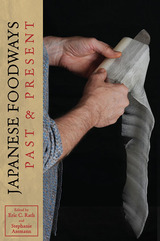 Japanese Foodways, Past and Present
Edited by Eric C. Rath and Stephanie Assmann
University of Illinois Press, 2010 Spanning nearly six hundred years of Japanese food culture, Japanese Foodways, Past and Present considers the production, consumption, and circulation of Japanese foods from the mid-fifteenth century to the present day in contexts that are political, economic, cultural, social, and religious. Diverse contributors--including anthropologists, historians, sociologists, a tea master, and a chef--address a range of issues such as medieval banquet cuisine, the tea ceremony, table manners, cookbooks in modern times, food during the U.S. occupation period, eating and dining out during wartimes, the role of heirloom vegetables in the revitalization of rural areas, children's lunches, and the gentrification of blue-collar foods. Framed by two reoccurring themes--food in relation to place and food in relation to status--the collection considers the complicated relationships between the globalization of foodways and the integrity of national identity through eating habits. Focusing on the consumption of Western foods, heirloom foods, once-taboo foods, and contemporary Japanese cuisines, Japanese Foodways, Past and Present shows how Japanese concerns for and consumption of food has relevance and resonance with other foodways around the world. Contributors are Stephanie Assmann, Gary Soka Cadwallader, Katarzyna Cwiertka, Satomi Fukutomi, Shoko Higashiyotsuyanagi, Joseph R. Justice, Michael Kinski, Barak Kushner, Bridget Love, Joji Nozawa, Tomoko Onabe, Eric C. Rath, Akira Shimizu, George Solt, David E. Wells, and Miho Yasuhara.
 Japanese Foreign Intelligence and Grand Strategy: From the Cold War to the Abe Era
Brad Williams
Georgetown University Press, 2023 Incisive insights into the distinctive nature of Japanese foreign intelligence and grand strategy, its underlying norms, and how they have changed over time Japanese foreign intelligence is an outlier in many ways. Unlike many states, Japan does not possess a centralized foreign intelligence agency that dispatches agents abroad to engage in espionage. Japan is also notable for civilian control over key capabilities in human and signals intelligence. Japanese Foreign Intelligence and Grand Strategy probes the unique makeup of Japan's foreign intelligence institutions, practices, and capabilities across the economic, political, and military domains and shows how they have changed over time. Brad Williams begins by exploring how Japan’s experiences of the Second World War and its new role as a major US ally influenced its adoption of bilateralism, developmentalism, technonationalism, and antimilitarism as key norms. As a result, Japanese intelligence-gathering resources centered primarily around improving its position in the global economy throughout the Cold War. Williams then brings his analysis up to the Abe Era, examining how shifts in the international, regional, and domestic policy environments in the twenty-first century have caused a gradual reassessment of national security strategy under former prime minister Shinzo Abe. As Japan reevaluates its old norms in light of regional security challenges, the book concludes by detailing how the country is beginning to rethink the size, shape, and purpose of its intelligence community. Anyone interested in Japanese intelligence, security, or international relations will welcome this important contribution to our understanding of the country's intelligence capabilities and strategy.
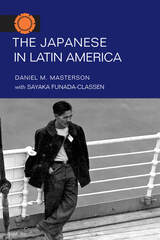 The Japanese in Latin America
Daniel M. Masterson with Sayaka Funada-Classen
University of Illinois Press, 2003 Latin America is home to 1.5 million persons of Japanese descent. Combining detailed scholarship with rich personal histories, Daniel M. Masterson, with the assistance of Sayaka Funada-Classen, presents the first comprehensive study of the patterns of Japanese migration on the continent as a whole. When the United States and Canada tightened their immigration restrictions in 1907, Japanese contract laborers began to arrive at mines and plantations in Latin America. The authors examine Japanese agricultural colonies in Latin America, as well as the subsequent cultural networks that sprang up within and among them, and the changes that occurred as the Japanese moved from wage labor to ownership of farms and small businesses. They also explore recent economic crises in Brazil, Argentina, and Peru, which, combined with a strong Japanese economy, caused at least a quarter million Latin American Japanese to migrate back to Japan. Illuminating authoritative research with extensive interviews with migrants and their families, The Japanese in Latin America tells the story of immigrants who maintained strong allegiances to their Japanese roots, even while they struggled to build lives in their new countries.
The Japanese Iris
Currier McEwen
Brandeis University Press, 1990 An international authority on irises offers the first definitive book in English on the history and cultivation of the Japanese iris.
Japanese Law: An Economic Approach
J. Mark Ramseyer and Minoru Nakazato
University of Chicago Press, 1998 In this introduction to Japanese law, J. Mark Ramseyer and Minoru Nakazato combine an economic approach with a clear and often amusing account of the law itself to challenge commonly held ideas about the law. Arguing against such things as the assumption that Japanese law differs from law in the United States and the idea that law plays only a trivial role in Japan or is culturally determined, this book will be recognized as a major contribution to the understanding of Japanese law.
"A compelling economic analysis. . . . This book remains one of the few concerning Japanese law that successfully brings to life the legal culture of Japan." —Bonnie L. Dixon, New York Law Journal
Japanese Law in Context: Readings in Society, the Economy, and Politics
Curtis J. Milhaupt
Harvard University Press, 2001 This is a wide-ranging selection of 130 readings in Japanese law. The essays, extracted from previously published books and articles, cover subjects including historical context, the civil law tradition, the legal services industry, dispute resolution, constitutional law, contracts, torts, criminal law, family law, employment law, corporate law, and economic regulation. This unique collection of readings is accompanied by the texts of the Japanese constitution and other basic laws.
 Japanese Marxist: A Portrait of Kawakami Hajime, 1879–1946
Gail Lee Bernstein
Harvard University Press, 1976 It is the merit of Bernstein's portrait of Kawakami Hajime that he emerges as a recognizable human being, a truly modern figure reflecting in his own life a personal and hard-won balance between traditional Japanese values and the demands of modernization. The heir of a samurai family, an acknowledged authority on economics, a professor at one of Japan's leading universities, an early popularizer of Marxism in Japan, a Japanese Communist on his own unique terms, and, finally, the author of an autobiography that is a classic of modern Japanese literature, Kawakami Hajime is an important figure in the history of modern Japan.
At each stage of Kawakami's winding path to Marxism—from patriotic nationalist to academic Marxist to revolutionary Communist—his concern for the ethical and economic problems that emerged in the course of Japan's astonishingly rapid industrialization dominated his consciousness. Bernstein provides a portrait of Kawakami's complex personality as well as an elegantly shaped narrative of the context and content of Japanese left-wing politics in the 1920s, and she makes plain the kinds of cultural conflict that modernization, in its several varieties, bequeathed to Japanese intellectuals.
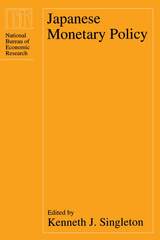 Japanese Monetary Policy
Edited by Kenneth J. Singleton
University of Chicago Press, 1993 How has the Bank of Japan (BOJ) helped shape Japan's economic growth during the past two decades? This book comprehensively explores the relations between financial market liberalization and BOJ policies and examines the ways in which these policies promoted economic growth in the 1980s. The authors argue that the structure of Japan's financial markets, particularly restrictions on money-market transactions and the key role of commercial banks in financing corporate investments, allowed the BOJ to influence Japan's economic success.
The first two chapters provide the most in-depth English-language discussion of the BOJ's operating procedures and policymaker's views about how BOJ actions affect the Japanese business cycle. Chapter three explores the impact of the BOJ's distinctive window guidance policy on corporate investment, while chapter four looks at how monetary policy affects the term structure of interest rates in Japan. The final two chapters examine the overall effect of monetary policy on real aggregate economic activity.
This volume will prove invaluable not only to economists interested in the technical operating procedures of the BOJ, but also to those interested in the Japanese economy and in the operation and outcome of monetary reform in general.
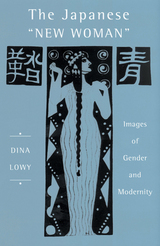 The Japanese 'New Woman': Images of Gender and Modernity
Lowy, Dina
Rutgers University Press, 2007 The dawn of the twentieth century in Japan witnessed the rise of a peculiar problem: the “Woman Problem.” This, at least, was the term used in an ongoing debate among the government and various intellectuals over how to define gender roles. While the government worked hard to promote the “good wife, wise mother” paradigm, certain female members of society had other notions about how to engage with their world.
In The Japanese “New Woman,” Dina Lowy focuses on this new female image as it was revealed, discussed, and debated in popular newspapers and magazines in the 1910s, as well as on the lives of a specific group of women—members of the feminist literary organization known as the Seitosha. These women drew on a variety of sources, including Zen training, Western writings and ideas, and Japanese morals and arts as they tried to open up new spaces for female activity beyond the confines of the home. Lowy shows how the Seitosha set a precedent that would be emulated in the decades to follow as Japanese women continued to question the patriarchal order, experiment with alternative visions, and pursue their rights in a variety of forms. This work also provides a context for comparative studies of New Women, gender debates, and the modernizing process.
 Japanese New York: Migrant Artists and Self-reinvention on the World Stage
Olga Kanzaki Sooudi
University of Hawaii Press, 2014 Spend time in New York City and, soon enough, you will encounter some of the Japanese nationals who live and work there—young English students, office workers, painters, and hairstylists. New York City, one of the world’s most vibrant and creative cities, is also home to one of the largest overseas Japanese populations in the world. Among them are artists and designers who produce cutting-edge work in fields such as design, fashion, music, and art. Part of the so-called “creative class” and a growing segment of the neoliberal economy, they are usually middle-class and college-educated. They move to New York for anywhere from a few years to several decades in the hope of realizing dreams and aspirations unavailable to them in Japan. Yet the creative careers they desire are competitive, and many end up working illegally in precarious, low paying jobs. Though they often migrate without fixed plans for return, nearly all eventually do, and their migrant trajectories are punctuated by visits home.
Japanese New York offers an intimate, ethnographic portrait of these Japanese creative migrants living and working in NYC. At its heart is a universal question—how do adults reinvent their lives? In the absence of any material or social need, what makes it worthwhile for people to abandon middle-class comfort and home for an unfamiliar and insecure life? Author Olga Sooudi explores these questions in four different venues patronized by New York’s Japanese: a grocery store and restaurant, where hopeful migrants work part-time as they pursue their ambitions; a fashion designer’s atelier and an art gallery, both sites of migrant aspirations. As Sooudi’s migrant artists toil and network, biding time until they “make it” in their chosen industries, their optimism is complicated by the material and social limitations of their lives.
The story of Japanese migrants in NYC is both a story about Japan and a way of examining Japan from beyond its borders. The Japanese presence abroad, a dynamic process involving the moving, settling, and return to Japan of people and their cultural products, is still underexplored. Sooudi’s work will help fill this lacuna and will contribute to international migration studies, to the study of contemporary Japanese culture and society, and to the study of Japanese youth, while shedding light on what it means to be a creative migrant worker in the global city today.
The Japanese Occupation of Malaya and Singapore, 1941-45: A Social and Economic History
Paul H. Kratoska
National University of Singapore Press, 2018 For three-and-a-half bleak years during World War II, Japan occupied Malaya and Singapore, transforming a once prosperous and vibrant region into a desolate place rife with unemployment, corruption, inflation and shortages of essential supplies. As Japan’s promised Greater East Asia crumbled, malnourished residents increasingly faced a struggle to survive, with little prospect of better times ahead.
Originally published in 1998, The Japanese Occupation of Malaya and Singapore is fully updated with material from newly discovered and recently translated documents and as well as new archival evidence. Kratoska’s work offers a clear depiction of wartime life under foreign occupation, and explains how the legacies of war and occupation shaped the post-war recovery in Malaya and Singapore.
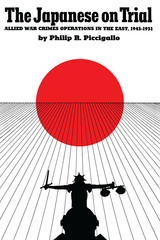 The Japanese On Trial: Allied War Crimes Operations in the East, 1945–1951
By Philip R. Piccigallo
University of Texas Press, 1979 This comprehensive treatment of post–World War II Allied war crimes trials in the Far East is a significant contribution to a neglected subject. While the Nuremberg and, to a lesser degree, Tokyo tribunals have received considerable attention, this is the first full-length assessment of the entire Far East operation, which involved some 5,700 accused and 2,200 trials. After discussing the Tokyo trial, Piccigallo systematically examines the operations of each Allied nation, documenting procedure and machinery as well as the details of actual trials (including hitherto unpublished photographs) and ending with a statistical summary of cases. This study allows a completely new assessment of the Far East proceedings: with a few exceptions, the trials were carefully and fairly conducted, the efforts of defense counsel and the elaborate review procedures being especially noteworthy. Piccigallo’s approach to this emotion-filled subject is straightforward and evenhanded throughout. He concludes with a discussion of the broader implications of such war crimes trials, a matter of interest to the general reader as well as to specialists in history, law, and international affairs.
Japanese Prefectures and Policymaking
Steven R. Reed
University of Pittsburgh Press, 1986 In this book, Steven R. Reed argues that studying only central administrations and national-level politics yields a picture of greater rigidity than actually exists in modern governments. There is not a simple dichotomy between centralization and local autonomy: many different relationships between levels of government are possible. Reed illustrates his point in nine detailed case studies in which he analyzes the governments of three of Japan's forty-seven prefectures. Reed interviews over one-hundred officials to reveal the innovative policymaking that exists at the local level.
Reed compares how each prefecture addresses pollution control, public housing, and access to the best high school education, and concludes that despite some inefficiency in the system, the results are usually very good. Japan's prefectures are important sources of governmental flexibility and responsiveness.
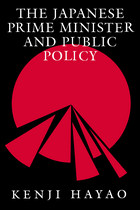 The Japanese Prime Minister and Public Policy
Kenji Hayao
University of Pittsburgh Press, 1993
Despite the undeniable importance of Japan in world affairs, both politically and economically, the office of the Japanese prime minister has recieved far less attention from scholars than have the top political offices in other advanced industrialized democracies. This book is the first major systemic analysis of the Japanese prime minister’s role and influence in the policy process.
Kenji Hayao argues that the Japanese prime minister can play a major if not critical role in bringing about a change in policy. In Japan the prime minister’s style is different from what is considered usual for parliamentary leaders: rather than being strong and assertive, he tends to be reactive. How did the role develop in this way? If he is not a major initiator of policy change, how and under what conditions can the prime minister make his impact felt? Finally, what are the consequences of this rather weak leadership?
In answering these questions, Professor Hayao presents two case studies (educational reform and reform of the tax system) involving Nakasone Yasuhiro to see how he be became involved in the policy issues and how he affected the process. Hayao then examines a number of broad forces that seem important in explaining the prime minister’s role in the policy process: how a leader is chosen; his relationships with other important actors in the political system - the political parties and the subgovernments; and the structure of his “inner” staff and advisors.
Japanese Reflections on World War II and the American Occupation
Edgar A. Porter and Ran Ying Porter
Amsterdam University Press, 2017 This book presents an unforgettable up-close account of the effects of World War II and the subsequent American occupation on Oita prefecture, through firsthand accounts from more than forty Japanese men and women who lived there. The interviewees include students, housewives, nurses, midwives, teachers, journalists, soldiers, sailors, Kamikaze pilots, and munitions factory workers. Their stories range from early, spirited support for the war through the devastating losses of friends and family members to air raids and into periods of hunger and fear of the American occupiers. The personal accounts are buttressed by archival materials; the result is an unprecedented picture of the war as experienced in a single region of Japan.
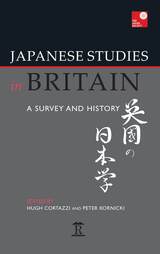 Japanese Studies in Britain: A Survey and History
Hugh Cortazzi
Amsterdam University Press, 2016 This book takes an in-depth look at the study of Japan in contemporary Britain, highlighting the many strengths but also pointing out some weaknesses, while at the same time offering a valuable historical record of the origins and development of Japanese Studies in British universities and other institutions. It comprises essays written by scholars from universities all over Britain – from Edinburgh and Newcastle to Cardiff, SOAS and Oxbridge+, as well as contributions from various supporting foundations and organizations – from the British Association of Japanese Studies (BAJS) to the Sainsbury Institute for the Study of Japanese Arts and Cultures (SISJAC). It opens with an historical overview by Peter Kornicki, followed by chapters on the important role of missionaries in advancing Japanese language studies in pre-war Japan by Hamish Ion and the contribution of the British consular and military officers before 1941 by Jim Hoare. Japanese Studies in Britain gives a snapshot of the present state of Japanese Studies in Britain. It also provides an important new benchmark and point of reference regarding the present options for studying Japan at British universities. It offers in addition a wider perspective on the role, relevance and future direction of Japanese Studies for academia, business and government, students planning their future careers and more generally the world of education, as well as readers interested in the developing relationship between Britain and Japan.
 The Japanese Today: Change and Continuity
Edwin O. Reischauer
Harvard University Press, 1988 With the two-thousand-year history of the Japanese experience as his foundation, Edwin O. Reischauer brings us an incomparable description of Japan today in all its complexity and uniqueness, both material and spiritual. His description and analysis present us with the paradox that is present-day Japan: thoroughly international, depending for its livelihood almost entirely on foreign trade, its products coveted everywhere—yet not entirely liked or trusted, still feared for its past military adventurism and for its current economic aggressiveness.
Reischauer begins with the rich heritage of the island nation, identifying incidents and trends that have significantly affected Japan’s modern development. Much of the geographic and historical material on Japan’s earlier years is drawn from his renowned study The Japanese, but the present book deepens and broadens that earlier interpretation: our knowledge of Japan has increased enormously in the intervening decade and our attitudes have become more ambivalent, while Japan too has changed, often not so subtly.
Moving to contemporary Japanese society, Reischauer explores both the constants in Japanese life and the aspects that are rapidly changing. In the section on government and politics he gives pithy descriptions of the formal workings of the various organs of government and the decision-making process, as well as the most contentious issues in Japanese life—pollution, nuclear power, organized labor—and the elusive matter of political style.
In what will become classic statements on business management and organization, Reischauer sketches the early background of trade and commerce in Japan, contrasts the struggling prewar economy with today’s assertive manufacturing, and brilliantly characterizes the remarkable postwar economic miracle of Japanese heavy industry, consumer product development, and money management. In a final section, “Japan and the World,” he attempts to explain to skeptical Westerners that country’s growing and painful dilemma between neutrality and alignment, between trade imbalance and “fair” practices, and the ever-vexing issue of that embodiment of Japanese specialness, a unique and difficult language that affects personal and national behavior.
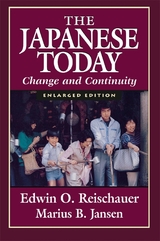 The Japanese Today: Change and Continuity, Enlarged Edition
Edwin O. Reischauer and Marius B. Jansen
Harvard University Press, 1995 Japan, like the rest of the world, has undergone enormous changes in the last few years. The impact of the end of the Cold War has combined with a worldwide recession to create a fluid situation in which long-held assumptions about politics and policies no longer hold. A classic, short history of Japan, this book has been brought up-to-date by Marius Jansen, now our most distinguished interpreter of Japanese history. Jansen gives a lucid account and analysis of the events that have rocked Japan since 1990, taking the story through the election of Murayama as prime minister.
About the previous edition:
With the two-thousand-year history of the Japanese experience as his foundation, Edwin O. Reischauer brings us an incomparable description of Japan today in all its complexity and uniqueness, both material and spiritual. His description and analysis present us with the paradox that is present-day Japan: thoroughly international, depending for its livelihood almost entirely on foreign trade, its products coveted everywhere—yet not entirely liked or trusted, still feared for its past military adventurism and for its current economic aggressiveness.
Reischauer begins with the rich heritage of the island nation, identifying incidents and trends that have significantly affected Japan’s modern development. Much of the geographic and historical material on Japan’s earlier years is drawn from his renowned study The Japanese, but the present book deepens and broadens that earlier interpretation: our knowledge of Japan has increased enormously in the intervening decade and our attitudes have become more ambivalent, while Japan too has changed, often not so subtly.
Moving to contemporary Japanese society, Reischauer explores both the constants in Japanese life and the aspects that are rapidly changing. In the section on government and politics he gives pithy descriptions of the formal workings of the various organs of government and the decision-making process, as well as the most contentious issues in Japanese life—pollution, nuclear power, organized labor—and the elusive matter of political style.
In what will become classic statements on business management and organization, Reischauer sketches the early background of trade and commerce in Japan, contrasts the struggling prewar economy with today’s assertive manufacturing, and brilliantly characterizes the remarkable postwar economic miracle of Japanese heavy industry, consumer product development, and money management. In a final section, “Japan and the World,” he attempts to explain to skeptical Westerners that country’s growing and painful dilemma between neutrality and alignment, between trade imbalance and “fair” practices, and the ever-vexing issue of that embodiment of Japanese specialness, a unique and difficult language that affects personal and national behavior.
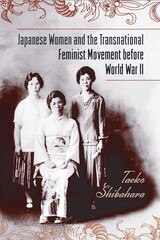 Japanese Women and the Transnational Feminist Movement before World War II
Taeko Shibahara
Temple University Press, 2014 This book traces the development of feminist consciousness in Japan from 1871 to 1941. Taeko Shibahara uncovers some fascinating histories as she examines how middle-class women navigated between domestic and international influences to form ideologies and strategies for reform. They negotiated a humanitarian space as Japan expanded its nationalist, militarist, imperialist, and patriarchal power. Focusing on these women's political awakening and activism, Shibahara shows how Japanese feminists channeled and adapted ideas selected from international movements and from interactions with mainly American social activists. Japanese Women and the Transnational Feminist Movement before World War II also connects the development of international contacts with the particular contributions of Ichikawa Fusae to the suffrage movement, Ishimoto Shidzue to the birth control movement, and Gauntlett Tsune to the peace movement by touching on issues of poverty, prostitution, and temperance. The result provides a window through which to view the Japanese women's rights movement with a broader perspective.
Japanese/Korean Linguistics, Volume 1
Edited by Hajime Hoji
CSLI, 1990 Japanese and Korean are typographically quite similiar, so a linguistic phenomenon in one language often has a counterpart in the other. The papers in this volume are intended to further collective and collaborative research into both languages.
The contributors discuss aspects of language acquisition, sociolinguistics, pragmatics, phonology, syntax, morphologyu, and semantics. Most of the papers were presented at the Southern Californai Japanese/Korean Linguistics Conference in 1989.
Hajime Hoji is a professor of linguistics at the University of Southern California.
Distributed for the Center for the Study of Language and Inforamtion
Japanese/Korean Linguistics, Volume 13
M. Endo Hudson, Peter Sells, and Sun-Ah Jun
CSLI, 2008 Japanese and Korean are typologically quite similar languages, and the linguistic phenomena of the former often hve counterparts in the latter. These collections from the annual Japanese/Korean linguistics conference include essays on the phonology, morphology, syntax, semantics, historical linguistics, discourse analysis, prosody, and psycholinguistics of both languages. Such comparative studies deepen our understanding of both languages and will be a useful reference to students and scholars in either field.
Japanese/Korean Linguistics, Volume 14
Edited by Timothy J. Vance and Kimberly Jones
CSLI, 2006 Japanese and Korean are typologically quite similar languages, and the linguistic phenomena of the former often hve counterparts in the latter. These collections from the annual Japanese/Korean linguistics conference include essays on the phonology, morphology, syntax, semantics, historical linguistics, discourse analysis, prosody, and psycholinguistics of both languages. Such comparative studies deepen our understanding of both languages and will be a useful reference to students and scholars in either field.
Japanese/Korean Linguistics, Volume 15
Edited by Naomi McGloin and Junki Mori
CSLI, 2007 Japanese and Korean are typologically quite similar languages, and the linguistic phenomena of the former often hve counterparts in the latter. These collections from the annual Japanese/Korean linguistics conference include essays on the phonology, morphology, syntax, semantics, historical linguistics, discourse analysis, prosody, and psycholinguistics of both languages. Such comparative studies deepen our understanding of both languages and will be a useful reference to students and scholars in either field.
Japanese/Korean Linguistics, Volume 16
Edited by Yukinori Takubo, Tomohide Kinuhata, Szymon Grzelak, and Kayo Nagai
CSLI, 2009 The annual Japanese/Korean Linguistics Conference provides a forum for presenting research that will broaden the understanding of these two languages, especially through comparative study. The sixteenth Japanese/Korean Linguistics Conference, held in October of 2006 at Kyoto University, was the first in the history of the conference to be held outside of the United States. The thirty-six papers in this volume encompass a variety of areas, such as phonetics; phonology; morphology; syntax; semantics; pragmatics; discourse analysis; and the geographical and historical factors that influence the development of languages, sociolinguistics, and psycholinguistics.
Japanese/Korean Linguistics, Volume 17
Edited by Shoishi Iwasaki, Haejime Hoji, Patricia M. Clancy, and Sung-Ock Sohn
CSLI, 2009 The papers in this volume are from the seventeenth Japanese/Korean Linguistics Conference, which was held at the University of California, Los Angeles in November of 2007. The articles cover a broad range of topics in Japanese and Korean linguistics, including phonology, morphology, syntax, semantics, historical linguistics, discourse analysis, prosody, psycholinguistics, sociolinguistics, acquisition, and grammaticalization.
Japanese/Korean Linguistics, Volume 18
Edited by William McClure and Marcel den Dikken
CSLI, 2011 Because Japanese and Korean are typologically quite similar, a linguistic phenomenon in one language often has a counterpart in the other. The annual Japanese/Korean Linguistics Conference provides a forum for presenting research that will deepen our understanding of these two languages, especially through comparative study. The papers in this volume are from the eighteenth Japanese/Korean Linguistics Conference, which was held at the Graduate Center of the City University of New York in 2008. The papers cover a broad range of topics in Japanese/Korean linguistics, including phonology, morphology, syntax, semantics, historical linguistics, discourse analysis, prosody, and psycholinguistics.
Japanese/Korean Linguistics, Volume 19
Edited by Ho-Min Sohn, Haruko Minegishi Cook, William O'Grady, Leon A. Serafim, and Sang Yee Cheon
CSLI, 2011 Japanese and Korean are typologically similar languages, and a linguistic phenomenon in the former often has a counterpart in the latter. The papers in this volume are from the nineteenth Japanese/Korean Linguistics Conference, which was held at the University of Hawai’i at Manoa. The collections in this volume include essays on the phonology, morphology, syntax, semantics, historical linguistics, discourse analysis, prosody, and psycholinguistics of both languages. Such comparative studies deepen our understanding of both languages and will be a useful reference for students and scholars in either field.
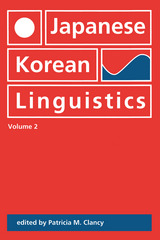 Japanese/Korean Linguistics, Volume 2
Edited by Patricia Clancy
CSLI, 1993 Japanese and Korean are typologically quite similar, so a linguitic phenomenon in one language often has a counterpart in the other. The papers in this voulme are intended to further collective and collaborative research in both languages.
The contributors discuss aspects of language acquisition, discourse, syntax, semantics, pragmatics, phonology, morphology, typology, sociolinguistics, and psycholinguistics. The papers were presented at the Southern California Japanese/Korean Linguistics Conference in September 1991.
Contributors to this volume are Patricia M. Clancy, SeikoYamaguchi Fujii, Shoichi Iwasaki, Kyu-hyun Kim, Yoshiko Matsumoto, Shigeko Okamoto, Sung-Ock S. Sohn, Kyung- Hee Suh, Eunjoo Han, Jongho Jun, Ongmi Kang, David James Silva, Noriko Akasuka, Shoji Azuma, Sooja Choi, Bruce L. Derwing, Yeo Bom Yoon, Sook Whan Cho, Tsuyoshi Ono, Hiroko Yamashita, Laurie Stowe, Mineharu Nakayama, Ruriko Kawashima, Masanori Nakamaura, Shin Watanbe, Dong-In Cho, Stanley Dubinsky, Hiroto Hoshi, Yasua Ishii, Hisatsugu Kitahara, Masatoshi Koizumi, Jae Hong Lee, Sookhee Lee, Young-Suk Lee, and Shigeo Tonoike.
Patricia Clancy is associate profressor in the Department of Linguistics at the University of California at Santa Barbara. She is the author of The Acquisition of Japanese.
Japanese/Korean Linguistics, Volume 20
Peter Sells
CSLI, 2013 Japanese and Korean are typologically similar, with linguistic phenomena in one often having counterparts in the other. The Japanese/Korean Linguistics Conference provides a forum for research, particularly through comparative study, of both languages. This volume includes essays on the phonology, morphology, syntax, semantics, historical linguistics, discourse analysis, prosody, and psycholinguistics of both languages. This volume will be a useful tool for any researcher or student in either field.
Japanese/Korean Linguistics, Volume 21
Seungho Nam, Heejeong Ko, and Jongho Jun
CSLI, 2015 Japanese and Korean are typologically similar languages, and a linguistic phenomenon in the former often has a counterpart in the latter. The papers in this volume are from the twenty-first Japanese/Korean Linguistics Conference, which was held at the Seoul National University in October 2011. The collections in this volume include essays on the phonology, morphology, syntax, semantics, historical linguistics, discourse analysis, prosody, and psycholinguistics of both languages. Such comparative studies deepen our understanding of both languages and will be a useful reference for students and scholars in either field.
Japanese/Korean Linguistics, Volume 22
Edited by Mikio Griko, Naonori Nagaya, Akiko Takemura, and Timothy J. Vance
CSLI, 2014 Japanese and Korean are typologically similar, with linguistic phenomena in one often having counterparts in the other. The Japanese/Korean Linguistics Conference provides a forum for research, particularly through comparative study, of both languages. The papers in this volume are from the twenty-second conference, which was held at the National Institute for Japanese Language and Linguistics. They include essays on the phonology, morphology, syntax, semantics, historical linguistics, discourse analysis, prosody, and psycholinguistics of both languages. Such comparative studies deepen our understanding of both languages and will be a useful reference for students and scholars in either field.
Japanese/Korean Linguistics, Volume 23
Edited by Theodore Levin, Ryo Masuda, and Michael Kenstowicz
CSLI, 2014 Japanese and Korean are typologically similar, with linguistic phenomena in one often having counterparts in the other. The Japanese/Korean Linguistics Conference provides a forum for research, particularly through comparative study, of both languages. The papers in this volume are from the twenty-third conference, which was held at the Massachusetts Institute of Technology. They include essays on the phonology, morphology, syntax, semantics, historical linguistics, discourse analysis, prosody, and psycholinguistics of both languages. Such comparative studies deepen our understanding of both languages and will be a useful reference for students and scholars in either field.
Japanese/Korean Linguistics, Volume 24
Edited by Kenshi Funakoshi, et al.
CSLI, 2017 Japanese and Korean are typologically similar, with linguistic phenomena in one often having counterparts in the other. The Japanese/Korean Linguistics Conference provides a forum for research, particularly through comparative study, on both languages. The papers in this volume are from the twenty-fourth conference, which was held at the National Institute for Japanese Language and Linguistics. They include essays on the phonology, morphology, syntax, semantics, historical linguistics, discourse analysis, prosody, and psycholinguistics of both languages. Such comparative studies deepen our understanding of both languages and will be a useful reference for students and scholars in either field.
Japanese/Korean Linguistics, Volume 25
Edited by Shinichiro Fukuda et al.
CSLI, 2018 Japanese and Korean are typologically similar, with linguistic phenomena in one often having counterparts in the other. The Japanese/Korean Linguistics Conference provides a forum for research, particularly through comparative study, on both languages. The papers in this volume are from the twenty-fifth conference, which was held at the University of Hawai’i at Mānoa. They include essays on the phonology, morphology, syntax, semantics, historical linguistics, discourse analysis, prosody, and psycholinguistics of both languages. Such comparative studies deepen our understanding of both languages and will be a useful reference for students and scholars in either field.
Japanese/Korean Linguistics, Volume 26
Edited by Shoichi Iwasaki, Susan Strauss, Shin Fukuda, and Sun-Ah Jun
CSLI, 2020 Japanese and Korean are typologically similar, with linguistic phenomena in one often having counterparts in the other. The Japanese/Korean Linguistics Conference provides a forum for research, particularly through comparative study, of both languages. This volume includes essays on the phonology, morphology, syntax, semantics, historical linguistics, discourse analysis, prosody, and psycholinguistics of both languages. This volume will be a useful tool for any researcher or student in either field.
Japanese/Korean Linguistics, Volume 28
Edited by Hae-Sung Jeon, Peter Sells, Zixi You, Sotaro Kita, and Jaehoon Yeon
CSLI, 2021 Japanese and Korean are typologically similar, with linguistic phenomena in one often having counterparts in the other. The Japanese/Korean Linguistics Conference provides a forum for research, particularly through comparative study, on both languages. The papers in this volume are from the twenty-eighth conference, which was held virtually at the University of Central Lancashire. They include essays on the phonology, morphology, syntax, semantics, historical linguistics, discourse analysis, prosody, and psycholinguistics of both languages. Such comparative studies enrichen our comprehension of both languages and will be a valuable reference for students and scholars in either field.
Japanese/Korean Linguistics, Volume 5
Edited by Noriko Akatsuka, Shoichi Iwasaki, and Susan Strauss
CSLI, 1996 Japanese and Korean are typologically quite similar, so a linguistic phenomenon in one language often has a counterpart in the other. The papers in this volume are intended to further compare and/or contrast research in both languages.
This volume reflects the Fifth Japanese/Korean Linguistics Conference's unique division into four distinct panels: Conversation, Grammaticalization and Semantics, Syntax and Semantics, and Korean Phonology.
The Fifth Japanese/Korean Linguistics Conference was held at the University of California, Los Angeles
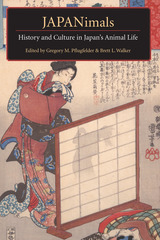 JAPANimals: History and Culture in Japan’s Animal Life
Gregory M. Pflugfelder and Brett L. Walker, Editors
University of Michigan Press, 2005 From swift steeds to ritually slaughtered deer to symbolic serpents, nonhuman animals of every stripe have participated from the earliest of times in the construction of the cultural community that we know as Japan. Yet the historical accounts that have hitherto prevailed, claim the authors of this innovative volume, relegate our fellow animals to a silent and benign “nature” that lies beyond the realm of narrative and agency. What happens when we restore nonhuman creatures to the field of historical vision? This book challenges many of the fundamental assumptions that have shaped contemporary scholarship on Japan, engaging from new perspectives questions of economic growth, isolation from and interaction with the outside world, the tools of conquest and empire, and the character of modernity. Essay by essay, this provocative collection compels readers to acknowledge the diversity of living beings who exist at the ragged edges of our human, as well as our historical, horizons.
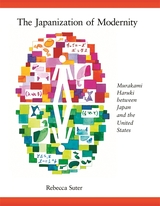 The Japanization of Modernity: Murakami Haruki between Japan and the United States
Rebecca Suter
Harvard University Press, 2008 Murakami Haruki is perhaps the best-known and most widely translated Japanese author of his generation. Despite Murakami’s critical and commercial success, particularly in the United States, his role as a mediator between Japanese and American literature and culture is seldom discussed.
Bringing a comparative perspective to the study of Murakami’s fiction, Rebecca Suter complicates our understanding of the author’s oeuvre and highlights his contributions not only as a popular writer but also as a cultural critic on both sides of the Pacific. Suter concentrates on Murakami’s short stories—less known in the West but equally worthy of critical attention—as sites of some of the author’s bolder experiments in manipulating literary (and everyday) language, honing cross-cultural allusions, and crafting metafictional techniques. This study scrutinizes Murakami’s fictional worlds and their extraliterary contexts through a range of discursive lenses: modernity and postmodernity, universalism and particularism, imperialism and nationalism, Orientalism and globalization.
By casting new light on the style and substance of Murakami’s prose, Suter situates the author and his works within the sphere of contemporary Japanese literature and finds him a prominent place within the broader sweep of the global literary scene.
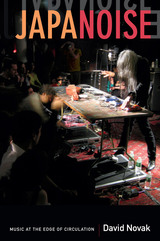 Japanoise: Music at the Edge of Circulation
David Novak
Duke University Press, 2013 Noise, an underground music made through an amalgam of feedback, distortion, and electronic effects, first emerged as a genre in the 1980s, circulating on cassette tapes traded between fans in Japan, Europe, and North America. With its cultivated obscurity, ear-shattering sound, and over-the-top performances, Noise has captured the imagination of a small but passionate transnational audience. For its scattered listeners, Noise always seems to be new and to come from somewhere else: in North America, it was called "Japanoise." But does Noise really belong to Japan? Is it even music at all? And why has Noise become such a compelling metaphor for the complexities of globalization and participatory media at the turn of the millennium? In Japanoise, David Novak draws on more than a decade of research in Japan and the United States to trace the "cultural feedback" that generates and sustains Noise. He provides a rich ethnographic account of live performances, the circulation of recordings, and the lives and creative practices of musicians and listeners. He explores the technologies of Noise and the productive distortions of its networks. Capturing the textures of feedback—its sonic and cultural layers and vibrations—Novak describes musical circulation through sound and listening, recording and performance, international exchange, and the social interpretations of media.
Japan's American Interlude
Kazuo Kawai
University of Chicago Press, 1979 How did the Japanese themselves respond to the American occupation? How were the sweeping reforms—political, social, and economic—of SCAP's program received? How permanent was their effect, and why did some succeed and others fail completely? How successful in the long view was the democratization induced by MacArthur's "artificial revolution"? And what tendencies existing in fundamental Japanese attitudes and history might account for this peculiar success?
The author, Japanese-born and educated in America, a political scientist and journalist, brings his unique experience and knowledge to bear on these questions. The result is a book which tells the story of the American occupation of Japan from the Japanese point of view.
 Japan’s Economy in War and Reconstruction
Jerome B. Cohen
University of Minnesota Press, 1949 Japan's Economy in War and Reconstruction was first published in 1949. Minnesota Archive Editions uses digital technology to make long-unavailable books once again accessible, and are published unaltered from the original University of Minnesota Press editions. Dr. Cohen's substantial monograph is a carefully documented account of Japan's economic development from 1937 to 1949. It describes with much statistical evidence a remarkable experiment in planned industrial expansion prior to 1941, then continues with a survey of the war years, showing both the successes and failures of the planning, controlling, financing, and developing of Japan's war industries. The last part of the book deals with the post-war problems of Japan from the war's end to the latter part of 1948—three years of occupation by the Allied Powers. Dr. Cohen discusses the three key economic factors: the basic reforms, the rapidly mounting inflation, and the slowly increasing, but still low level of production. Dr. Cohen's first chapter is devoted to the careful planning of the years before the war. The next chapters discuss Japan's efforts to cope with the problems of munitions, food supply, and labor as the Allied war effort gradually wore her down. There are detailed studies of separate industries, shipping, and agriculture, and a discussion of the parts played respectively by air, sea, and land operations in the destruction of Japan's ability to wage successful war. One of the main theses of these chapters is that the increasingly enveloping blockade of Japan shut off necessary industrial raw materials, and so brought Japanese war production to a virtual standstill before the main weight of the strategic air attack was delivered, and so made it impossible for Japan to continue the war. The author's grim picture of inter-service quarrels and overlapping and inconsistent controls demonstrates that the Japanese army, navy, and civil service, in spite of their reputation for exact and strict organization, in practice failed to make good use of their unlimited powers.
Japan’s First Student Radicals
Henry DeWitt Smith
Harvard University Press, 1972 Long obscured by the more dramatic activities of post–World War II student activists, the history of the Japanese left-wing student movement during its formative period from 1918 until its suppression in the 1930s is analyzed here in detail for the first time. Focusing on the Shinjinkai (New Man Society) of Tokyo Imperial University, the leading prewar student group, Henry DeWitt Smith describes the origins and evolution of student radicalism in the period between the two World Wars. He concludes with an analysis of the careers of the Shinjinkai members after graduation and with an explanation of the importance of the prewar tradition to the postwar student movement.
 Japan's Holy War: The Ideology of Radical Shinto Ultranationalism
Walter A. Skya
Duke University Press, 2009 Japan’s Holy War reveals how a radical religious ideology drove the Japanese to imperial expansion and global war. Bringing to light a wealth of new information, Walter A. Skya demonstrates that whatever other motives the Japanese had for waging war in Asia and the Pacific, for many the war was the fulfillment of a religious mandate. In the early twentieth century, a fervent nationalism developed within State Shintō. This ultranationalism gained widespread military and public support and led to rampant terrorism; between 1921 and 1936 three serving and two former prime ministers were assassinated. Shintō ultranationalist societies fomented a discourse calling for the abolition of parliamentary government and unlimited Japanese expansion. Skya documents a transformation in the ideology of State Shintō in the late nineteenth century and the early twentieth. He shows that within the religion, support for the German-inspired theory of constitutional monarchy that had underpinned the Meiji Constitution gave way to a theory of absolute monarchy advocated by the constitutional scholar Hozumi Yatsuka in the late 1890s. That, in turn, was superseded by a totalitarian ideology centered on the emperor: an ideology advanced by the political theorists Uesugi Shinkichi and Kakehi Katsuhiko in the 1910s and 1920s. Examining the connections between various forms of Shintō nationalism and the state, Skya demonstrates that where the Meiji oligarchs had constructed a quasi-religious, quasi-secular state, Hozumi Yatsuka desired a traditional theocratic state. Uesugi Shinkichi and Kakehi Katsuhiko went further, encouraging radical, militant forms of extreme religious nationalism. Skya suggests that the creeping democracy and secularization of Japan’s political order in the early twentieth century were the principal causes of the terrorism of the 1930s, which ultimately led to a holy war against Western civilization.
 Japan’s Imperial House in the Postwar Era, 1945–2019
Kenneth J. Ruoff
Harvard University Press, 2020 With the ascension of a new emperor and the dawn of the Reiwa Era, Kenneth J. Ruoff has expanded upon and updated The People’s Emperor, his study of the monarchy’s role as a political, societal, and cultural institution in contemporary Japan. Many Japanese continue to define the nation’s identity through the imperial house, making it a window into Japan’s postwar history.
Ruoff begins by examining the reform of the monarchy during the US occupation and then turns to its evolution since the Japanese regained the power to shape it. To understand the monarchy’s function in contemporary Japan, the author analyzes issues such as the role of individual emperors in shaping the institution, the intersection of the monarchy with politics, the emperor’s and the nation’s responsibility for the war, nationalistic movements in support of the monarchy, and the remaking of the once-sacrosanct throne into a “people’s imperial house” embedded in the postwar culture of democracy. Finally, Ruoff examines recent developments, including the abdication of Emperor Akihito and the heir crisis, which have brought to the forefront the fragility of the imperial line under the current legal system, leading to calls for reform.
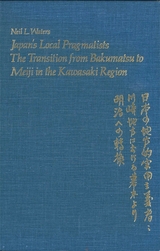 Japan’s Local Pragmatists: The Transition from Bakumatsu to Meiji in the Kawasaki Region
Neil L. Waters
Harvard University Press Japanese local history is used as an ingredient in historiographical theories designed to prove that the rapid pace of change in Japan led either to phenomenal success or to dismal failure. Against the backdrop of a comprehensive overview of Japanese historiography, Neil Waters examines in detail the local politics of the Kawasaki region during the late nineteenth century. Historians have hitherto focused primarily upon those regions that experienced violent peasant uprisings, class conflict, or extreme government repression. He points out that localities which survived the transition between governments without violence far outnumber those marked by open struggle.
This study is one of the few to cover the political and economic history of a region in which “nothing happened.” From an examination of the implementation and impact of Restoration programs on the day-to-day level of local government in the Kawasaki region, a fascinating picture emerges of the adaptation and modifications local leaders were able to chart between open rebellion and outright capitulation.
Japan’s Political Marketplace: With a New Preface
J. Mark Ramseyer and Frances M. Rosenbluth
Harvard University Press, 1993 Mark Ramseyer and Frances McCall Rosenbluth show how rational-choice theory can be applied to Japanese politics. Using the concept of principal and agent, Ramseyer and Rosenbluth construct a persuasive account of political relationships in Japan. In doing so, they demonstrate that political considerations and institutional arrangements reign in what, to most of the world, looks like an independently powerful bureaucratic state.
Japan’s Practice of International Law
Hidehisa Horinouchi
Amsterdam University Press, 2022 Diplomacy is a series of crises, and the navigational beacon for a nation is international law. This book is a collection of articles on six selected international legal issues concerning Japan. It addresses various issues, including self-defence, post-war legal issues, chemical weapons, the law of the sea, consular immunities, and hijacking. It is a legal documentary through which the reader can look into the minds of Japanese officials challenged by one crisis after another. As a coherent whole, this book ably represents “Japan’s Practice of International Law” and remarkably portrays international law in action from a Japanese practitioner’s perspective.
Japan’s Protoindustrial Elite: The Economic Foundations of the Gōnō
Edward E. Pratt
Harvard University Press, 1999 Students of the late Tokugawa and Meiji periods have long recognized the critical role of rural elites (the gōnō) in Japan’s economic transformation, but the largely impressionistic and episodic scholarship on this pivotal class has created an image of rural elites as successful trailblazers of industrial society. Through a close examination of economic trends and case studies of particular families, this study demonstrates that Japan’s protoindustrial economy was far more volatile than portrayed in most studies to date. Few rural elites survived the competitive and unstable climate of this era. Onerous exactions, interregional competition, market volatility, and succession problems propelled many wealthy families into steep decline and others into drastic shifts in the focus of their businesses.
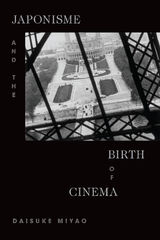 Japonisme and the Birth of Cinema
Daisuke Miyao
Duke University Press, 2020 In Japonisme and the Birth of Cinema, Daisuke Miyao explores the influence of Japanese art on the development of early cinematic visual style, particularly the actualité films made by the Lumière brothers between 1895 and 1905. Examining nearly 1,500 Lumière films, Miyao contends that more than being documents of everyday life, they provided a medium for experimenting with aesthetic and cinematic styles imported from Japan. Miyao further analyzes the Lumière films produced in Japan as a negotiation between French Orientalism and Japanese aesthetics. The Lumière films, Miyao shows, are best understood within a media ecology of photography, painting, and cinema, all indebted to the compositional principles of Japonisme and the new ideas of kinetic realism it inspired. The Lumière brothers and their cinematographers shared the contemporaneous obsession among Impressionist and Post-Impressionist artists about how to instantly and physically capture the movements of living things in the world. Their engagement with Japonisme, he concludes, constituted a rich and productive two-way conversation between East and West.
JAR vol 72 num 1
The University of Chicago Press
University of Chicago Press Journals, 2016
JAR vol 72 num 2
The University of Chicago Press
University of Chicago Press Journals, 2016
JAR vol 72 num 3
The University of Chicago Press
University of Chicago Press Journals, 2016
JAR vol 72 num 4
The University of Chicago Press
University of Chicago Press Journals, 2016
JAR vol 73 num 1
The University of Chicago Press
University of Chicago Press Journals, 2017
JAR vol 73 num 2
The University of Chicago Press
University of Chicago Press Journals, 2017
JAR vol 73 num 3
The University of Chicago Press
University of Chicago Press Journals, 2017
JAR vol 73 num 4
The University of Chicago Press
University of Chicago Press Journals, 2017
JAR vol 74 num 1
The University of Chicago Press
University of Chicago Press Journals, 2018
JAR vol 74 num 2
The University of Chicago Press
University of Chicago Press Journals, 2018
JAR vol 74 num 3
The University of Chicago Press
University of Chicago Press Journals, 2018
JAR vol 74 num 4
The University of Chicago Press
University of Chicago Press Journals, 2018
JAR vol 75 num 1
The University of Chicago Press
University of Chicago Press Journals, 2019
JAR vol 75 num 2
The University of Chicago Press
University of Chicago Press Journals, 2019
JAR vol 75 num 3
The University of Chicago Press
University of Chicago Press Journals, 2019
JAR vol 75 num 4
The University of Chicago Press
University of Chicago Press Journals, 2019
JAR vol 76 num 1
The University of Chicago Press
University of Chicago Press Journals, 2020
JAR vol 76 num 2
The University of Chicago Press
University of Chicago Press Journals, 2020
JAR vol 76 num 3
The University of Chicago Press
University of Chicago Press Journals, 2020
JAR vol 76 num 4
The University of Chicago Press
University of Chicago Press Journals, 2020
JAR vol 77 num 1
The University of Chicago Press
University of Chicago Press Journals, 2021
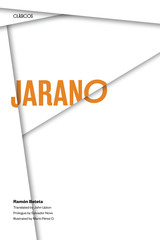 Jarano
By Ramón Beteta
University of Texas Press, 1970 Ramón Beteta was an important figure in Mexican life: politician, Cabinet member, diplomat, economist, professor, journalist. The manuscript of Jarano was found among his papers after his death in 1965 and was published in Mexico in 1966. "Jarano," the kind of broad sombrero worn by charros, was the secret nickname—partly disrespectful, partly amused, partly affectionate—which Ramón and his brother gave to their father. Except for part of the last chapter, the book is about Ramón's childhood and youth: sketches of family life, school experiences, a trip to Veracruz, and incidents of the Revolution.
Beteta brought to these reminiscences the skills of the short story writer, making superb use of dialogue, descriptive details, characterization, and mood. For a small book, the range of emotions is unusually wide, from the comedy of an evening meal to which Jarano has come home drunk to the tragedy of the indio and his wife in the chapter entitled "San Vicente Chicoloapan"—a chapter that gives more of the "feel" of the Revolution than do many longer works.
 Jardinería desértica: Mes por mes
George Brookbank y Félix P. Hurtado
University of Arizona Press, 2001 ¿Cuál es el mejor tiempo del año para plantar? ¿Cuándo es el mejor tiempo para fertilizar el árbol frutal? ¿Cuándo se debe plantar la mata de tomate en la primavera? Los jardineros que viven en el desierto del sudoeste no pueden contar con las prácticas recomendadas para otras partes del país. El sol del verano, las lluvias esporádicas y las cortas e inestables temporadas de cultivación producen una nueva serie de reglas para el jardinero del desierto. Jardinería desértica---mes por mes le servirá de guía para cuidar las plantas de su jardín y determinar el mejor tiempo para plantar, podar, y regar. Este libro es especialmente útil para los jardineros y residentes recién llegados al sudoeste desértico. Si usted cultiva vegetales o árboles frutales y cítricos, o si sencillamente quiere mantener un jardín hermoso, encontrará que este libro práctico le informará sobre las labores necesarias y le ayudará a recordar las tareas importantes que inadvertidamente podría olvidar. Now available in a Spanish-language edition, this popular guide provides pointers to the maintenance needed to keep gardens flourishing and landscapes attractive throughout the year. Translated by master gardener Félix Hurtado, Jardinería desértica makes a wealth of common-sense wisdom available to Spanish-speaking readers.
JARMAN (all this maddening beauty) and other plays
Caridad Svich
Intellect Books, 2016 “JARMAN (all this maddening beauty”) and Other Plays is a collection of three radically poetic works for live performance by OBIE Award–winning playwright Caridad Svich. The playtexts includes a lyrical meditation on the legacy of iconic queer artist Derek Jarman, a meditation on displacement and human suffering (Carthage/Cartagena), and an intimately operatic reflection on Penelope and Odysseus (The Orphan Sea). Accompanied by scholarly essays placing the plays in context, this book showcases the beautiful strangeness and profound resistance in Svich’s work.
“Svich is one of the finest poet/playwrights of this generation. . . . She is a playwright whose plays perform like dramatic poems that are wondrous to the ear and moving to the heart.”—Seth Gordon, Repertory Theatre of St. Louis
Jaume Huguet: A Study of Late Gothic Painting in Catalonia
Benjamin Rowland Jr.
Harvard University Press From the little-known treasury of fifteenth-century Spanish art, Dr. Rowland has brought again to life the significant figure of Jaume Huguet, the Catalan painter, whose work reveals a personality that is still attractive and vital. He dominated the art of his whole period, and came as near to establishing a tradition of his own as any other painter of the time, a fact which is explained as much by his own individuality as by his Improvements on the manner of his predecessors. Dr. Rowland, by his delightfully written text and his discerning choice of paintings for reproduction, has presented Huguet in a manner that will attract not only the historian and the technical student of art but the general reader as well.
Java Man: How Two Geologists Changed Our Understanding of Human Evolution
Carl C. Swisher III, Garniss H. Curtis, and Roger Lewin
University of Chicago Press, 2001 "'Garniss, lend me your knife for a second, will you,' I whispered." So begins Java Man, the inside story of how one discovery—a human skull found on the island of Java—by two geologists shook the foundations of science. By uncovering new evidence about the hominid known as Java man, Carl C. Swisher and Garniss H. Curtis were able to date his fossil remains at 1.7 million years, an age that stunned the scientific community because it pushed back the time when humans migrating out of Africa first reached Eurasia by nearly one million years. Cowritten by the popular science writer Roger Lewin, this is a gripping and informative account of the discovery that breathed new life into the human origins debate.
Originally published by Scribner
2000 ISBN: 0-684-80000-4
Javanese: A Cultural Approach
Ward Keeler
Ohio University Press, 1984 Foreign language lessons often provide translations into a foreign language of phrases students would normally use in their native language and cultural setting. Particularly when studying a non-Western language, such direct translation is very misleading. Students must instead learn the conventions that guide human interactions, so they know both what to say and how to say it.
In this text, therefore, the sociological context of Javanese is explained as thoroughly as Javanese grammar. The book presents Javanese in its full complexity and range in order to illustrate a cultural appoach to a non-Western language; it will therefore be of interest not only to language learners, but to linguists, sociologists, anthropologists, and many others.
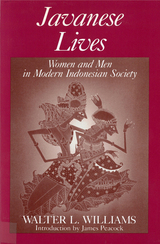 Javanese Lives: Women and Men in Modern Indonesian Society
Williams, Walter L.
Rutgers University Press, 1991 Java is the most populous island of Indonesia, the fifth largest nation in the world. Yet despite its importance, outsiders know little about the country or its people. With the help of Indonesian students and scholars, Walter L. Williams has collected and translated the life histories of twenty-seven Javanese women and men. The people interviewed tell how they have coped with rapid social and economic change, and the transformation of their traditions. Williams has carefully selected the individuals he includes to represent a wide diversity of Java's people. We hear from fascinating men and women of various religions, from the rich and the poor, and from different ethnic backgrounds. Diversity is a constant theme, as evidenced by a poor pedicab driver who can barely scrape along, by a rich businesswoman who explains how she balances her professional and domestic roles, by an educated and respected homosexual school principal, and by an illiterate mother of fourteen children. All of them present in their lives a unique Javanese approach to living. These oral histories were derived from elderly people, who have a larger perspective on the changes they have seen in their lifetimes. The focus of the first section of the book is the way people have adapted in their daily lives to massive social and economic changes. In the middle section, we hear from the Javanese who represent traditional values in the midst of change. Finally, we hear from educators and parents who tell us of their concerns for Indonesian youth and the future of Indonesia.
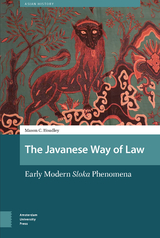 The Javanese Way of Law: Early Modern Sloka Phenomena
Mason Hoadley
Amsterdam University Press, 2019 The author's investigation of early-modern Javanese law reveals that judicial authority does not come from the contents of legal titles or juridical texts, but from legal maxims and variations thereof. A century and a half ago Simon Keyzer, a recognized scholar of Javanese law, noted that understanding of that law is dependent upon a grasp of such pithy expressions, which provide the key to the whole body of suits. (Preface, C.F. Winter, Javaansche Zamenspraken, 1858, which examines hundreds of sloka, the majority of which are directed to prevailing legal practice). Drawing upon the contents of 18th century Javanese legal texts, the present work builds upon Keyzer's and Winter's references to 'sloka-phenomena', namely sloka proper (maxims) and its derivatives sinalokan (that made of sloka), aksara here meaning legal principles, and prakara (matter, case). These are usually conveyed in vignettes illustrating their function and as a group, constitute the essence of traditional Javanese written law.
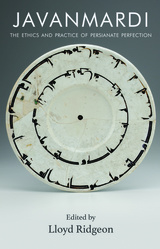 Javanmardi: The Ethics and Practice of Persianate Perfection
Edited by Lloyd Ridgeon
Gingko, 2018 Javanmardi is one of those Persian terms that is frequently mentions in discussions of Persian identity, and yet its precise meaning is difficult to comprehend. A number of equivalents have been offered, including chivalry and manliness, and while these terms are not incorrect, javanmardi transcends them. The concept encompasses character traits of generosity, selflessness, hospitality, bravery, courage, honesty, truthfulness and justice--and yet there are occasions when the exact opposite of these is required for one to be a javanmard. At times it would seem that being a javanmard is about knowing and doing the right thing, although this definition, too, falls short of the term's full meaning.
The present collection is the product of a three-year project financed by the British Institute of Persian Studies on the theme of "Javanmardi in the Persianate world." The articles in this volume represent the sheer range, influence, and importance that the concept has had in creating and contributing to Persianate identities over the past one hundred and fifty years. The contributions are intentionally broad in scope. Rather than focus, for example, on medieval Sufi manifestations of javanmardi, both medieval and modern studies were encouraged, as were literary, artistic, archaeological, and sociological studies among others. The opening essays examine the concept’s origin in medieval history and legends throughout a geographical background that spans from modern Iran to Turkey, Armenia, and Bosnia, among both Muslim and Christian communities. Subsequent articles explore modern implications of javanmardi within such contexts as sportsmanship, political heroism, gender fluidity, cinematic representations, and the advent of digitalization.
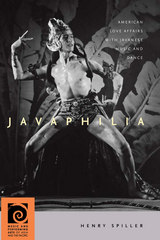 Javaphilia: American Love Affairs with Javanese Music and Dance
Henry Spiller
University of Hawaii Press, 2015 Fragrant tropical flowers, opulent batik fabrics, magnificent bronze gamelan orchestras, and, of course, aromatic coffee. Such are the exotic images of Java, Indonesia’s most densely populated island, that have hovered at the periphery of North American imaginations for generations. Through close readings of the careers of four “javaphiles”—individuals who embraced Javanese performing arts in their own quests for a sense of belonging— this volume explores a century of representations of Javanese performing arts by North Americans. While other Asian cultures made direct impressions on Americans by virtue of firsthand contacts through immigration, trade, and war, the distance between Java and America, and the vagueness of Americans’ imagery, enabled a few disenfranchised musicians and dancers to fashion alternative identities through bold and idiosyncratic representations of Javanese music and dance.
The Javelin Thrower
Paolo Volponi
Seagull Books, 2018 As a boy growing up in rural Italy in the 1930s, Damìn is experiencing the first stirrings of adolescence when he accidentally sees his mother having sex with the local Fascist commandant. His pain, anger, and confusion are uncomfortably intertwined with a compulsion to watch them, which becomes an obsession.
Isolating himself from anyone who might help him understand what he’s feeling, he channels his fury into his javelin, getting better and better until he is a local champion. But his success is fleeting, as wholly confused and caught up in his own anger, he ends up betraying and humiliating his friends. The Javelin Thrower is the story of an erotic education turned tragic, poisoned by the darkness running through Mussolini’s Italy.
Jaws of Life: Stories
Laura Leigh Morris
West Virginia University Press, 2018 In the hills of north central West Virginia, there lives a cast of characters who face all manner of problems. From the people who are incarcerated in West Virginia’s prisons, to a woman who is learning how to lose her sight with grace, to another who sorely regrets selling her land to a fracking company, Jaws of Life portrays the diverse concerns the people of this region face every day—poverty, mental illness, drug abuse, the loss of coal mines, and the rise of new extractive industries that exert their own toll. While these larger concerns exist on the edges of their realities, these characters must still deal with quotidian difficulties: how to coexist with ex-spouses, how to care for sick family members, and how to live with friends who always seem to have more.
Jay Cooke, Private Banker
Henrietta M. Larson
Harvard University Press Jay Cooke was a leader in the transformation of the earlier type of passive banker into a promoter and director of enterprise. To meet the unprecedented needs of the Federal government during the Civil War, he brought a great organization and high pressure selling into the securities business. In the railroad boom following the war, he transferred his organization and methods to the support and promotion of railroads. As banker-promoter, he pointed the way towards the methods which became the basis for the powerful investment-banker type. Henrietta Larson’s book emphasizes his business career rather more than the personal and public aspects of his life. In contrast to many business biographies, it is written solely to give as accurate a picture as possible of the workings of an important section of American business and to study the career of one important banker carefully and impartially.
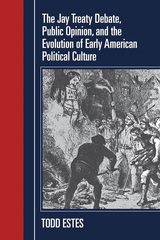 The Jay Treaty Debate, Public Opinion, and the Evolution of Early American Political Culture
Todd Estes
University of Massachusetts Press, 2006 During the mid-1790s, citizens of the newly formed United States became embroiled in a divisive debate over a proposed commercial treaty with Great Britain. Long regarded as a pivotal event in the history of the early republic, the controversy pitted pro-treaty Federalists against anti-treaty Jeffersonian Republicans. Yet as Todd Estes argues in this perceptive study, the year-long debate over the ratification of the Jay Treaty represented more than a clash over foreign policy between two nascent political parties. It also marked a significant milestone in the role played by public opinion in the young nation's political culture.
Drawing evidence from a broad range of sources—petitions and newspaper polemics, crowd gatherings, as well as rhetorical exchanges on the floor of Congress—Estes shows how both sides in the Jay Treaty debate mounted extensive and unprecedented campaigns to marshal popular support for their positions. Although many Americans initially opposed the treaty, the Federalists proved particularly skillful at courting the public and eventually prevailed over their opponents, just as they had won earlier battles over neutrality, democratic societies, and the Whiskey Rebellion. But the Republicans, Estes points out, learned from the experience, and in the long run they would become even more adept than the Federalists at shaping public opinion.
Even at the time, amid the fierce political rhetoric and colorful street demonstrations that characterized the Jay Treaty debate, participants recognized that important changes were taking place. Not only did the dispute solidify party allegiances, it also legitimized and advanced popular involvement in the political process. While some welcomed the emergence of this new, more democratic political culture, Estes concludes, others were much more ambivalent.
Jaya: Performance in Epic Mahābhārata
Kevin McGrath
Harvard University Press, 2011 Jaya is a study of how the four poets of the Indian epic Mahābhārata fuse their separate performances of the poem into a single and seamless work of art. The book examines in detail the different mnemonic forms engaged by this verbal activity focusing primarily on the distinction between what is seen and what is heard, as the poets stage and dramatize the four dimensions of their heroic song within one timely occasion. The subtle poetics of preliteracy and literacy which are compounded in one performance are demonstrated and made distinct in both a literary and a conceptual light. Jaya will be of interest to those who work in Sanskrit and Indian Studies, the Classics, Oral Traditions, Comparative Literature, and the traditions of archaic poetry.
 Jazz Among the Discourses
Krin Gabbard
Duke University Press, 1995 The study of jazz comes of age with this anthology. One of the first books to consider jazz outside of established critical modes, Jazz Among the Discourses brings together scholars from an array of disciplines to question and revise conventional methods of writing and thinking about jazz. Challenging "official jazz histories," the contributors to this volume view jazz through the lenses of comparative literature; African American studies; music, film, and communication theory; English literature; American studies; history; and philosophy. With uncommon rigor and imagination, their essays probe the influence of various discourses—journalism, scholarship, politics, oral history, and entertainment—on writing about jazz. Employing modes of criticism and theory that have transformed study in the humanities, they address questions seldom if ever raised in jazz writing: What are the implications of building jazz history around the medium of the phonograph record? Why did jazz writers first make the claim that jazz is an art? How is an African American aesthetic articulated through the music? What are the consequences of the interaction between the critic and the jazz artist? How does the improvising artist navigate between chaos and discipline? Along with its companion volume, Representing Jazz, this versatile anthology marks the arrival of jazz studies as a mature, intellectually independent discipline. Its rethinking of conventional jazz discourse will further strengthen the position of jazz studies within the academy. Contributors. John Corbett, Steven B. Elworth, Krin Gabbard, Bernard Gendron, William Howland Kenney, Eric Lott, Nathaniel Mackey, Burton Peretti, Ronald M. Radano, Jed Rasula, Lorenzo Thomas, Robert Walser
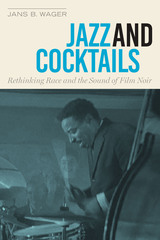 Jazz and Cocktails: Rethinking Race and the Sound of Film Noir
By Jans B. Wager
University of Texas Press, 2017 Film noir showcased hard-boiled men and dangerous femmes fatales, rain-slicked city streets, pools of inky darkness cut by shards of light, and, occasionally, jazz. Jazz served as a shorthand for the seduction and risks of the mean streets in early film noir. As working jazz musicians began to compose the scores for and appear in noir films of the 1950s, black musicians found a unique way of asserting their right to participate fully in American life. Jazz and Cocktails explores the use of jazz in film noir, from its early function as a signifier of danger, sexuality, and otherness to the complex role it plays in film scores in which jazz invites the spectator into the narrative while simultaneously transcending the film and reminding viewers of the world outside the movie theater. Jans B. Wager looks at the work of jazz composers such as Miles Davis, Duke Ellington and Billy Strayhorn, Chico Hamilton, and John Lewis as she analyzes films including Sweet Smell of Success, Elevator to the Gallows, Anatomy of a Murder, Odds Against Tomorrow, and considers the neonoir American Hustle. Wager demonstrates how the evolving role of jazz in film noir reflected cultural changes instigated by black social activism during and after World War II and altered Hollywood representations of race and music.
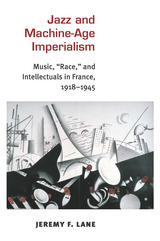 Jazz and Machine-Age Imperialism: Music, "Race," and Intellectuals in France, 1918-1945
Jeremy F. Lane
University of Michigan Press, 2014 Jeremy F. Lane’s Jazz and Machine-Age Imperialism is a bold challenge to the existing homogenous picture of the reception of American jazz in world-war era France. Lane’s book closely examines the reception of jazz among French-speaking intellectuals between 1918 and 1945 and is the first study to consider the relationships, sometimes symbiotic, sometimes antagonistic, between early white French jazz critics and those French-speaking intellectuals of color whose first encounters with the music in those years played a catalytic role in their emerging black or Creole consciousness. Jazz’s first arrival in France in 1918 coincided with a series of profound shocks to received notions of French national identity and cultural and moral superiority. These shocks, characteristic of the era of machine-age imperialism, had been provoked by the first total mechanized war, the accelerated introduction of Taylorist and Fordist production techniques into European factories, and the more frequent encounters with primitive “Others” in the imperial metropolis engendered by interwar imperialism. Through close readings of the work of early white French jazz critics, alongside the essays and poems of intellectuals of color such as the Nardal sisters, Léon-Gontran Damas, Léopold Sédar Senghor, and René Ménil, Jazz and Machine-Age Imperialism highlights the ways in which the French reception of jazz was bound up with a series of urgent contemporary debates about primitivism, imperialism, anti-imperialism, black and Creole consciousness, and the effects of American machine-age technologies on the minds and bodies of French citizens.
 Jazz as a Cultural Archive, Volume 22
Jim Merod, ed.
Duke University Press The jazz jam session is becoming obsolete. This spontaneous, organic communal habit of playing music for fun and with obsessive abandon is threatened by economic, technological, and cultural changes that have transformed the jazz scene. Now driven largely by commercial interests, jazz serves a wide audience that can enjoy its musical tradition in the comfort of the living room. While jazz as an art form has moved from an essentially live club experience to a controlled mass market enterprise, jazz as a cultural form is becoming more recognized and more defined. Reminiscent of yesterday’s more personal jazz encounter, Jazz as a Cultural Archive is an intellectual and controversial jam session. This issue views the evolution of jazz culture through the eyes of the artists themselves. Conversations with saxophonist/composer Benny Golson, singer Mary Stallings, pianists John Hicks and Frank Strazzeri, and trumpeter Art Farmer, among others, highlight this collection of commentary on the changing jazz scene. Also included are an essay by one of the foremost chroniclers of the jazz world, novelist and critic Albert Murray; a look at jazz and the politics of race by trombonist/composer Tom McIntosh; and a stunning collection of photographs by renowned jazz photographer Michael Oletta.
 The Jazz Barn: Music Inn, the Berkshires, and the Place of Jazz in American Life
John Gennari
Brandeis University Press, 2025 How a small town in New England became a home for jazz, challenging conventional assumptions about the relationship between culture and landscape, art and geography, town and city, and race and place.
This is a book about what happened in the 1950s in a barn, an icehouse, and a greenhouse in the verdant Berkshire Hills of western Massachusetts. Against the backdrop of McCarthyism, the civil rights movement, the expansion of the Afro-Caribbean diaspora, and postwar cultural tourism, two New Yorkers bought part of a sprawling estate in Lenox, where they converted an old barn and other outbuildings into an inn that could host musical performances and seminars. The Berkshire Music Barn went on to host jazz greats like Duke Ellington, Dave Brubeck, and Billie Holiday, as well as jazz roundtables grounded in folkloric approaches to the music.
The Jazz Barn explores the cultural significance of venues like the Berkshire Music Barn and later the Lenox School of Jazz to tell a surprising story about race, culture, and place. John Gennari explores how a predominantly white New England town became a haven for African American musicians, and reveals the Berkshires as an important incubator not just of American literature and classical music but also of the Modern Jazz Quartet and Ornette Coleman’s “new thing.” The Berkshire Music Barn became a crucial space for the mainstreaming of jazz. By the late 1950s, the School of Jazz was an epicenter of the genre’s avant-garde.
Richly illustrated with the photographs of Clemens Kalischer among others, The Jazz Barn demonstrates that the locations where jazz is played and heard indelibly shape the music and its meanings.
Jazz Composition and Orchestration
William Russo
University of Chicago Press, 1968 "Russo has undertaken an ambitious project, attempting to discuss together the elements of music that are commonly treated separately in books on harmony, counterpoint, and orchestration. As such, his new book contains enough musical instruction to be of interest even to students not particularly interested in 'jazz' or Russo's own musical idiom. For the student who wants to compose or arrange for 'jazz' ensembles from dance bands to full orchestras, Russo has shown himself to be a generous source of good advice."—Jon Newsom, Notes
Jazz Composition and Orchestration
William Russo
University of Chicago Press, 1968 "Russo has undertaken an ambitious project, attempting to discuss together the elements of music that are commonly treated separately in books on harmony, counterpoint, and orchestration. As such, his new book contains enough musical instruction to be of interest even to students not particularly interested in 'jazz' or Russo's own musical idiom. For the student who wants to compose or arrange for 'jazz' ensembles from dance bands to full orchestras, Russo has shown himself to be a generous source of good advice."—Jon Newsom, Notes
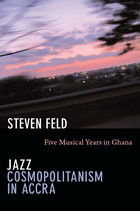 Jazz Cosmopolitanism in Accra: Five Musical Years in Ghana
Steven Feld
Duke University Press, 2012 In this remarkable book, Steven Feld, pioneer of the anthropology of sound, listens to the vernacular cosmopolitanism of jazz players in Ghana. Some have traveled widely, played with American jazz greats, and blended the innovations of John Coltrane with local instruments and worldviews. Combining memoir, biography, ethnography, and history, Feld conveys a diasporic intimacy and dialogue that contests American nationalist and Afrocentric narratives of jazz history. His stories of Accra's jazz cosmopolitanism feature Ghanaba/Guy Warren (1923–2008), the eccentric drummer who befriended the likes of Charlie Parker, Max Roach, and Thelonious Monk in the United States in the 1950s, only to return, embittered, to Ghana, where he became the country's leading experimentalist. Others whose stories figure prominently are Nii Noi Nortey, who fuses the legacies of the black avant-gardes of the 1960s and 1970s with pan-African philosophy in sculptural shrines to Coltrane and musical improvisations inspired by his work; the percussionist Nii Otoo Annan, a traditional master inspired by Coltrane's drummers Elvin Jones and Rashied Ali; and a union of Accra truck and minibus drivers whose squeeze-bulb honk-horn music for drivers' funerals recalls the jazz funerals of New Orleans. Feld describes these artists' cosmopolitan outlook as an "acoustemology," a way of knowing the world through sound.
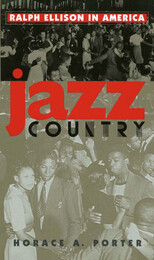 Jazz Country: Ralph Ellison in America
Horace A. Porter
University of Iowa Press, 2001 Horace Porter is the chair of African American World Studies and professor of English at the University of Iowa. He is the author of Stealing Fire: The Art and Protest of James Baldwin and one of the editors of Call and Response: The Riverside Anthology of the African American Literary Tradition. The first book to reassess Ralph Ellison after his death and the posthumous publication ofJuneteenth, his second novel, Jazz Country: Ralph Ellison in America explores Ellison's writings and views on American culture through the lens of jazz music. Horace Porter's groundbreaking study addresses Ellison's jazz background, including his essays and comments about jazz musicians such as Louis Armstrong, Duke Ellington, and Charlie Parker. Porter further examines the influences of Ellington and Armstrong as sources of the writer's personal and artistic inspiration and highlights the significance of Ellison's camaraderie with two African American friends and fellow jazz fans—the writer Albert Murray and the painter Romare Bearden. Most notably, Jazz Country demonstrates how Ellison appropriated jazz techniques in his two novels, Invisible Man and Juneteenth. Using jazz as the key metaphor, Porter refocuses old interpretations of Ellison by placing jazz in the foreground and by emphasizing, especially as revealed in his essays, the power of Ellison's thought and cultural perception. The self-proclaimed “custodian of American culture,” Ellison offers a vision of “jazz-shaped” America—a world of improvisation, individualism, and infinite possibility.
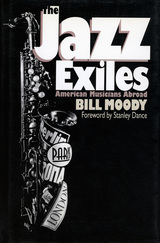 Jazz Exiles
Bill Moody
University of Nevada Press, 2000 The Jazz Exiles chronicles the expatriate movement of American jazz musicians during the post-World War II era. While the term "exiles" normally conjures up images of ousted Third World leaders or deposed kings, it is as much a part of the jazz vocabulary as improvization or Birdland. Like the American writers of the 1920s who went to Europe and became Gertrude Stein's "lost generation", jazz musicians from the United States also made the Atlantic crossing at a steadily increasing rate until many of the major names in jazz lived or worked almost exclusively abroad. Throughout "The Jazz Exiles", the musicians speak for themselves in describing their motivation for joining the exodus to Europe which is now regarded as the third largest migration in jazz history. The exiles include many of the biggest names in jazz - Dexter Gordon, Johnny Griffin, Phil Woods, Coleman Hawkins, Louis Armstrong, Stan Getz, Benny Carter, and Bud Powell, among others. This work also assesses the impact of foreign residence on the careers of these musicians and on the history of jazz. Moody, a jazz musician himself, charts the movement of American musicians to Europe from a historical perspective and examines the exile experience from a number of sociological and economic viewpoints, all of which are factors in understanding jazz history. With stories narrated through personal interviews in the musicians' own words, "The Jazz Exiles" aims to shed new light on America's attitude toward its own original art form and examines the dilemma of the American artist both at home and abroad. Jazz aficionados, rhythm and blues fans - in fact, anyone who appreciates American music - should read the stories of these jazz exiles. "
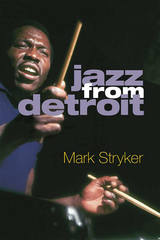 Jazz from Detroit
Mark Stryker
University of Michigan Press, 2019 Jazz from Detroit explores the city’s pivotal role in shaping the course of modern and contemporary jazz. With more than two dozen in-depth profiles of remarkable Detroit-bred musicians, complemented by a generous selection of photographs, Mark Stryker makes Detroit jazz come alive as he draws out significant connections between the players, eras, styles, and Detroit’s distinctive history.
Stryker’s story starts in the 1940s and ’50s, when the auto industry created a thriving black working and middle class in Detroit that supported a vibrant nightlife, and exceptional public school music programs and mentors in the community like pianist Barry Harris transformed the city into a jazz juggernaut. This golden age nurtured many legendary musicians—Hank, Thad, and Elvin Jones, Gerald Wilson, Milt Jackson, Yusef Lateef, Donald Byrd, Tommy Flanagan, Kenny Burrell, Ron Carter, Joe Henderson, and others. As the city’s fortunes change, Stryker turns his spotlight toward often overlooked but prescient musician-run cooperatives and self-determination groups of the 1960s and ’70s, such as the Strata Corporation and Tribe. In more recent decades, the city’s culture of mentorship, embodied by trumpeter and teacher Marcus Belgrave, ensured that Detroit continued to incubate world-class talent; Belgrave protégés like Geri Allen, Kenny Garrett, Robert Hurst, Regina Carter, Gerald Cleaver, and Karriem Riggins helped define contemporary jazz. The resilience of Detroit’s jazz tradition provides a powerful symbol of the city’s lasting cultural influence.
Stryker’s 21 years as an arts reporter and critic at the Detroit Free Press are evident in his vivid storytelling and insightful criticism. Stryker has fully updated the paperback since the publication of the hardcover. This award-winning book will appeal to jazz aficionados, casual fans, and anyone interested in the vibrant and complex history of cultural life in Detroit.
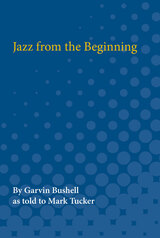 Jazz from the Beginning
Garvin Bushell
University of Michigan Press, 1990 Few musicians can boast careers as long and productive as that of jazz instrumentalist Garvin Bushell. In Jazz from the Beginning, Bushell vividly recounts his musical experiences and reflects on some of the major personalities who shaped the history of jazz. Bushell's memoir vibrates with the excitement of being a part of the evolution of jazz. He began his career as a teenager, playing clarinet in a circus band. In the 1920s, he played gigs in rowdy Harlem cabarets and was a member of the Sam Wooding ensemble, one of the first black musical groups to tour Europe, Russia, and South America. In the 1930s, he performed with the big bands of Fletcher Henderson, Cab Calloway, and Chick Webb. In the 1950s and 1960s he participated in the Dixieland revival and in the modern experiments of Eric Dolphy and John Coltrane. Bushell also recalls with candor the scarring experiences of racial prejudice he encountered while touring America and Europe.Mark Tucker has carefully compiled Bushell's memoirs from a series of thirty-one taped interviews made in the summer of 1986. His text preserves Bushell’s warmth and personality and provides scholars and music lovers alike with a critical analysis of African-American music and an important record of seventy years of American musical history.
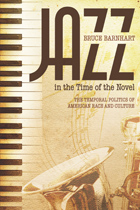 Jazz in the Time of the Novel: The Temporal Politics of American Race and Culture
Bruce Evan Barnhart
University of Alabama Press, 2013 Winner of the Elizabeth Agee Prize in American Literature Jazz in the Time of the Novel argues that a culture’s understanding of the concept of time plays a central role in its economic, social, and aesthetic affairs and that a culture arrives at its conception of time through its artistic practices. Bruce Barnhart, in Jazz in the Time of the Novel, shows that American culture of the first three decades of the twentieth century was shaped by the kindred rhythms and movements of two particular art forms: jazz and fiction. At the beginning of the twentieth century, widespread changes in America’s social, demographic, and economic norms threatened longstanding faith in a unified and inevitable movement towards a better future. As Barnhart shows both jazz and novels of the period address these temporal uncertainties, inserting themselves into arguments about the proper unfolding of an affirmative American future. Barnhart proposes that these two aesthetic forms can be viewed as co-participants in an ongoing discussion about the way in which the future should be imagined and experienced—a discussion symptomatic of the broader exchanges taking place within the many trajectories comprising early twentieth-century American culture. This book includes in-depth approaches to numerous examples of jazz and the novel, including performances by James P. Johnson, Louis Armstrong, Bessie Smith, Duke Ellington, and Ethel Waters, and novels by James Weldon Johnson, F. Scott Fitzgerald, Ernest Hemingway, Gertrude Stein, and Nella Larsen, among others. In addition to the details of specific musical and literary works, Jazz in the Time of the Novel offers careful consideration as to how these works impact their social context.
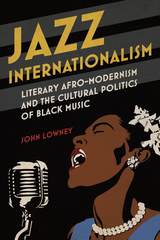 Jazz Internationalism: Literary Afro-Modernism and the Cultural Politics of Black Music
John Lowney
University of Illinois Press, 2017 Jazz emerged during the political and social upheaval of world war, communist revolution, Red Scares, and the Black Migration. The tumult bred disagreements about the cultural significance of jazz that concerned both its African American roots and its international appeal. The questions about what was new or even radical about the music initiated debates that writers recapitulated for decades. Jazz Internationalism offers a bold reconsideration of jazz's influence in Afro-modernist literature. Ranging from the New Negro Renaissance through the social movements of the 1960s, John Lowney articulates nothing less than a new history of Afro-modernist jazz writing. Jazz added immeasurably to the vocabulary for discussing radical internationalism and black modernism in leftist African American literature. Lowney examines how Claude McKay, Ann Petry, Langston Hughes, and many other writers employed jazz as both a critical social discourse and mode of artistic expression to explore the possibilities—and challenges—of black internationalism. The result is an expansive understanding of jazz writing sure to spur new debates.
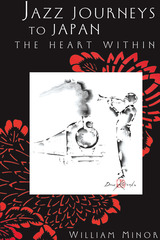 Jazz Journeys to Japan: The Heart Within
William Minor
University of Michigan Press, 2004
Part music history, part cultural meditation, part travel narrative, Jazz Journeys to Japan is the first book to address the experiences of individual players -- Japanese jazz greats such as Toshiko Akiyoshi, Masahiko Satoh, Makoto Ozone, and Yosuke Yamashita.
William Minor navigates the converging streams of Western music and Eastern tradition, revealing through interviews with musicians, critics, and producers the unique synthesis that results from this convergence. And, turning conventional wisdom on its ear, he disproves the widely held notion that Japanese jazz artists don't "swing." Along the way, we experience Minor's growing appreciation of Japanese culture, which mirrors his subjects' discovery of American jazz.
William Minor's previous books include Unzipped Souls: A Jazz Journey through the Soviet Union, and Monterey Jazz Festival: Forty Legendary Years. He has written for Downbeat, Jazz Times, Jazz Notes, Coda, and Swing Journal.
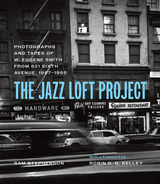 The Jazz Loft Project: Photographs and Tapes of W. Eugene Smith from 821 Sixth Avenue, 1957–1965
W. Eugene Smith and Sam Stephenson
University of Chicago Press, 2023 Reissue of an acclaimed collection of images from photographer W. Eugene Smith’s time in a New York City loft among jazz musicians.
In 1957, Eugene Smith walked away from his longtime job at Life and the home he shared with his wife and four children to move into a dilapidated, five-story loft building at 821 Sixth Avenue in New York City’s wholesale flower district. The loft was the late-night haunt of musicians, including some of the biggest names in jazz—Charles Mingus, Zoot Sims, Bill Evans, and Thelonious Monk among them. Here, from 1957 to 1965, he made nearly 40,000 photographs and approximately 4,000 hours of recordings of musicians. Smith found solace in the chaotic, somnambulistic world of the loft and its artists, and he turned his documentary impulses away from work on his major Pittsburg photo essay and toward his new surroundings.
Smith’s Jazz Loft Project has been legendary in the worlds of art, photography, and music for more than forty years, but until the publication of this book, no one had seen his extraordinary photographs or read any of the firsthand accounts of those who were there and lived to tell the tales.
Jazz Matters: Reflections on the Music & Some of Its Makers
Doug Ramsey
University of Arkansas Press, 1989 Rich in anecdote and insight, Jazz Matters is a collection of essays, profiles, and reviews by Doug Ramsey, and observer and chronicler of jazz and its musicians for more than thirty years. It stirs the reader to discover or rediscover the music and performers Ramsey describes. His accounts of recording sessions and live performances enhance this excellent review of the history, variety, and artistic depth that make jazz so profound an element in modern culture. Jazz Matters gives the reader a basis for understanding jazz improvisation Ramsey’s sensitive, straightforward, and entertaining pieces promote appreciation of the accomplishment of artists from Louis Armstrong to John Coltrane and Ornette Coleman.
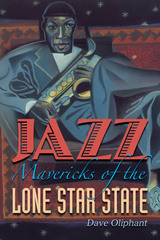 Jazz Mavericks of the Lone Star State
By Dave Oliphant
University of Texas Press, 2007 Jazz is one of America's greatest gifts to the arts, and native Texas musicians have played a major role in the development of jazz from its birth in ragtime, blues, and boogie-woogie to its most contemporary manifestation in free jazz. Dave Oliphant began the fascinating story of Texans and jazz in his acclaimed book Texan Jazz, published in 1996. Continuing his riff on this intriguing musical theme, Oliphant uncovers in this new volume more of the prolific connections between Texas musicians and jazz. Jazz Mavericks of the Lone Star State presents sixteen published and previously unpublished essays on Texans and jazz. Oliphant celebrates the contributions of such vital figures as Eddie Durham, Kenny Dorham, Leo Wright, and Ornette Coleman. He also takes a fuller look at Western Swing through Milton Brown and his Musical Brownies and a review of Duncan McLean's Lone Star Swing. In addition, he traces the relationship between British jazz criticism and Texas jazz and defends the reputation of Texas folklorist Alan Lomax as the first biographer of legendary jazz pianist-composer Jelly Roll Morton. In other essays, Oliphant examines the links between jazz and literature, including fiction and poetry by Texas writers, and reveals the seemingly unlikely connection between Texas and Wisconsin in jazz annals. All the essays in this book underscore the important parts played by Texas musicians in jazz history and the significance of Texas to jazz, as also demonstrated by Oliphant's reviews of the Ken Burns PBS series on jazz and Alfred Appel Jr.'s Jazz Modernism.
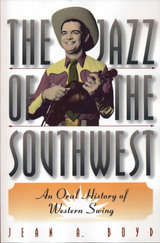 The Jazz of the Southwest: An Oral History of Western Swing
By Jean A. Boyd
University of Texas Press, 1998 They may wear cowboy hats and boots and sing about "faded love," but western swing musicians have always played jazz! From Bob Wills and the Texas Playboys to Asleep at the Wheel, western swing performers have played swing jazz on traditional country instruments, with all of the required elements of jazz, and some of the best solo improvisation ever heard. In this book, Jean A. Boyd explores the origins and development of western swing as a vibrant current in the mainstream of jazz. She focuses in particular on the performers who made the music, drawing on personal interviews with some fifty living western swing musicians. From pioneers such as Cliff Bruner and Eldon Shamblin to current performers such as Johnny Gimble, the musicians make important connections between the big band swing jazz they heard on the radio and the western swing they created and played across the Southwest from Texas to California. From this first-hand testimony, Boyd re-creates the world of western swing-the dance halls, recording studios, and live radio shows that broadcast the music to an enthusiastic listening audience. Although the performers typically came from the same rural roots that nurtured country music, their words make it clear that they considered themselves neither "hillbillies" nor "country pickers," but jazz musicians whose performance approach and repertory were no different from those of mainstream jazz. This important aspect of the western swing story has never been told before.
 Jazz on the River
William Howland Kenney
University of Chicago Press, 2005 Just after World War I, the musical style called jazz began a waterborne journey outward from that quintessential haven of romance and decadence, New Orleans. For the first time in any organized way, steam-driven boats left town during the summer months to tramp the Mississippi River, bringing an exotic new music to the rest of the nation. For entrepreneurs promoting jazz, this seemed a promising way to spread northward the exciting sounds of the Crescent City. And the musicians no longer had to wait for folks upriver to make their way down to New Orleans to hear the vibrant rhythms, astonishing improvisations, and new harmonic idioms being created.
Simply put, when jazz went upstream, it went mainstream, and in Jazz on the River, William Howland Kenney brings to life the vibrant history of this music and its seduction of the men and women along America's inland waterways. Here for the first time readers can learn about the lives and music of the levee roustabouts promoting riverboat jazz and their relationships with such great early jazz adventurers as Louis Armstrong, Fate Marable, Warren "Baby" Dodds, and Jess Stacy. Kenney follows the boats from Memphis to St. Louis, where new styles of jazz were soon produced, all the way up the Ohio River, where the music captivated audiences in Cincinnati and Pittsburgh alike.
Jazz on the River concludes with the story of the decline of the old paddle wheelers-and thus riverboat jazz-on the inland waterways after World War II. The enduring silence of our rivers, Kenney argues, reminds us of the loss of such a distinctive musical tradition. But riverboat jazz still lives on in myriad permutations, each one in tune with our own times.
Jazz Radio America
Aaron J. Johnson
University of Illinois Press, 2024 Once a lively presence on radio, jazz now finds itself relegated to satellite broadcasters and low-watt stations at the edge of the dial. Aaron J. Johnson examines jazz radio from the advent of Black radio in 1948 to its near extinction from the commercial dial after 1980. Even in jazz’s heyday, programmers and DJs excluded many styles and artists, and Johnson delves into how the politics of decision-making and the political uses of the medium shaped jazz radio formats. Johnson shows radio’s role in the contradictory perceptions of jazz as American’s model artistic contribution to the world, as Black classical music, and as the soundtrack of African American rebellion and resistance for much of the twentieth century. An interwoven story of a music and a medium, Jazz Radio America answers perennial questions about why certain kinds of jazz get played and why even that music is played in so few places.
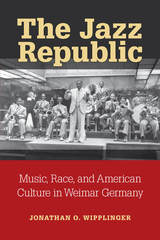 The Jazz Republic: Music, Race, and American Culture in Weimar Germany
Jonathan O. Wipplinger
University of Michigan Press, 2017 The Jazz Republic examines jazz music and the jazz artists who shaped Germany’s exposure to this African American art form from 1919 through 1933. Jonathan O. Wipplinger explores the history of jazz in Germany as well as the roles that music, race (especially Blackness), and America played in German culture and follows the debate over jazz through the fourteen years of Germany’s first democracy. He explores visiting jazz musicians including the African American Sam Wooding and the white American Paul Whiteman and how their performances were received by German critics and artists. The Jazz Republic also engages with the meaning of jazz in debates over changing gender norms and jazz’s status between paradigms of high and low culture. By looking at German translations of Langston Hughes’s poetry, as well as Theodor W. Adorno’s controversial rejection of jazz in light of racial persecution, Wipplinger examines how jazz came to be part of German cultural production more broadly in both the US and Germany, in the early 1930s.
Using a wide array of sources from newspapers, modernist and popular journals, as well as items from the music press, this work intervenes in the debate over the German encounter with jazz by arguing that the music was no mere “symbol” of Weimar’s modernism and modernity. Rather than reflecting intra-German and/or European debates, it suggests that jazz and its practitioners, African American, white American, Afro-European, German and otherwise, shaped Weimar culture in a central way.
The Jazz Singer
Edited, with an introduction by Robert L. Carringer; Tino T. Balio, Series Edito
University of Wisconsin Press, 1979 The Jazz Singer was the first feature length film with spoken dialog as part of the dramatic action. Set in the 1920s, it deals with the elemental conflicts underlying a precise historical moment for the first-generation Jew in America—sacred versus profane, Jew versus Gentile, ascetic versus libertine, deprivation versus economic promise, immobility versus displacement.
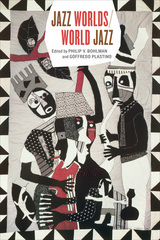 Jazz Worlds/World Jazz
Edited by Philip V. Bohlman and Goffredo Plastino
University of Chicago Press, 2016 Many regard jazz as the soundtrack of America, born and raised in its cities and echoing throughout its tumultuous century of progress. So when Ernest Hemingway wrote about seeing jazz in 1920s Paris, and when British colonial officials danced to jazz in the clubs of Calcutta in the waning years of the Raj, how, exactly, had it gotten there? Jazz Worlds/World Jazz aims to answer these questions and more, bringing together voices from countries as far flung as Azerbaijan, Armenia, and India to show that the story of jazz is not trapped in American history books but alive in global modernity.
Monumental in scope, this book explores the relationship between jazz and culture and how they influence each other across a range of themes and settings. Contributors offer an analysis of the social meaning of jazz in Iran, a look at the genesis of Ethiopian jazz and at Indian fusion, and chapters on jazz diplomacy, Balkan swing, and that French export par excellence: Django Reinhardt. Altogether the contributors approach jazz—in these global iterations—through the themes that have always characterized it at home: place, history, mobility, media, and race. The result is a first-of-its-kind map of jazz around the globe that pays tribute to the players who have given the form its seemingly infinite possibilities.
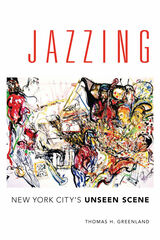 Jazzing: New York City's Unseen Scene
Thomas H. Greenland
University of Illinois Press, 2016 How do we speak about jazz? In this provocative study based on the author's deep immersion in the New York City jazz scene, Tom Greenland turns from the usual emphasis on artists and their music to focus on non-performing participants, describing them as active performers in their own right who witness and thus collaborate in a happening made one-of-a-kind by improvisation, mood, and moment. Jazzing shines a spotlight on the constituency of proprietors, booking agents, photographers, critics, publicists, painters, amateur musicians, fans, friends, and tourists that makes up New York City's contemporary jazz scene. Drawn from deep ethnographic research, interviews, and long term participant observation, Jazzing charts the ways New York's distinctive physical and social-cultural environment affects and is affected by jazz. Throughout, Greenland offers a passionate argument in favor of a radically inclusive conception of music-making, one in which individuals collectively improvise across social contexts to co-create community and musical meaning. An odyssey through the clubs and other performance spaces on and off the beaten track, Jazzing is an insider's view of a vibrant urban art world.
 JD: A Novel
Mark Merlis
University of Wisconsin Press, 2015 Jonathan Ascher, an acclaimed 1960s radical writer and cultural hero, has been dead for thirty years.
When a would-be biographer approaches Ascher’s widow Martha, she delves for the first time into her husband’s papers and all the secrets that come tumbling out of them. She finds journals that begin as a wisecracking chronicle of life at the fringes of the New York literary scene, then recount Ascher’s sexual adventures in the pre-Stonewall gay underground and the social upheavals that led to his famous book “JD.” As Martha reads on, she finds herself in a long-distance conversation with her dead husband, fighting with him again about their rocky marriage and learning about the unseen tragedy in her own apartment that ended with the destruction of their son, Mickey. Mickey comes to life in the space between Jonathan and Martha’s conflicting portraits of him, while Martha and the biographer tangle over the continued relevance of Jonathan’s politics and his unfulfilled vision of a nation remade. Martha learns about herself, finally, through her confrontation with a man who will not let her go, even in death.
Mark Merlis’s JD is a brilliant and harrowing view of a half century of the American experiment, acted out on a small stage by three people who cannot find a way—neither sex nor touch nor words—to speak their love for one another.
Best Books of 2015: Fiction, Open Letters Monthly
Finalist, Gay Fiction, Lambda Literary Award
Finalist, Ferro-Grumley Award for LGBT Fiction, Publishing Triangle
Best books for public & secondary school libraries from university presses, American Library Association
“Many years after a ’60s New York writer's death, his widow confronts their tumultuous marriage and private identities through his journals. . . . JD’s most masterful element is its treatment of these two characters, both of whom spent their lives groping for contentment like one trying to find a light switch in a darkened room. A great writer offers not just tight prose but also insight, a series of probing questions that extend from the fictional world into the real one. JD asks who its characters were, and in doing so, forces the reader to confront the intricate and fascinating politics of identity.”—Shelf Awareness for Readers, *starred review
“A truly impressive work of literary fiction, JD documents author Mark Merlis as an extraordinary novelist able to deftly craft a complex plot and populate it with a roster of inherently fascinating characters and memorable events. The result is an entertaining and engaging read that will linger in the mind long after the book is finished. Very highly recommended for both community and academic library literary fiction collections.”—Midwest Book Review/Reviewer’s Bookwatch
“The fantastic JD (U. of Wisconsin), by acclaimed gay writer Mark Merlis (American Studies), is the writer's first novel in a dozen years. It's told in two voices. The first is that of the late gay writer Jonathan Ascher, and we hear from him through his journals. The second belongs to his widow Martha, who learns more about Jonathan than she ever imagined while reading the journals after agreeing to help a biographer of her late husband.”—Gregg Shapiro, Bay Area Reporter
 Je me souviens: Histoire, culture, et littérature du Québec francophone
Elizabeth Blood and J. Vincent H. Morrissette
Georgetown University Press, 2016 Je me souviens invites post-intermediate students of French to improve their language skills while exploring the complex history and culture of Québec. Drawing on cultural products from the earliest days of exploration to the present day, Elizabeth Blood and J.Vincent H. Morrissette curate an array of texts that sample Québécois literature, popular culture, art, music, and politics and frame the texts with pre-reading and post-reading activities, cultural notes, and historical overview sections. The interdisciplinary approach challenges students to improve their French language skills while learning about Québec. Thematically organized writings delve into issues central to understanding the many facets of contemporary Québécois identity, while prompts direct students to search for a range of materials online. Je me souviens is an essential resource for students interested in understanding the francophone world.
 Je me souviens: Histoire, culture, et littérature du Québec francophone
Elizabeth Blood
Georgetown University Press "With Je me souviens, Blood and Morrissette have produced a unique one-semester cultural and literary reader that will acquaint students in French with the history and contemporary issues that have made Québec the complex and fascinatingly vibrant society it is today. Even instructors already familiar with this francophone region will find selections that will engage their students' curiosity and enrich their own understanding." -- Miléna Santoro, vice-president for the Americas and Asia Pacific for the International Association for Québec Studies and associate professor of French and Québec Studies, Georgetown University "Using an interdisciplinary approach through a variety of texts and documents, Je me souviens provides an excellent overview of Québec from different perspectives. Well organized, thought-provoking, and enriched by a wealth of illustrations, this textbook is unique for its content and will appeal to students from various backgrounds." -- Marie-Christine Weidmann Koop, professor of French, University of North Texas and past president, American Association of Teachers of French
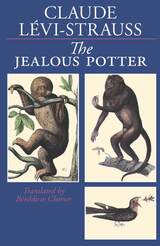 The Jealous Potter
Claude Lévi-Strauss
University of Chicago Press, 1988 As Lévi-Strauss freely explores the mythologies of the Americas, with occasional incursions into European and Japanese folklore, tales of sloths and squirrels interweave with discussions of Freud, Saussure, "signification," and plays by Sophocles and Labiche. Lévi-Strauss critiques psychoanalytic interpretation and defends the interpretive powers of structuralism.
"Electrifying. . . . A brilliant demonstration of structural analysis in action. . . . Can be read with pleasure and profit by anyone interested in that aspect of self-discovery that comes through knowledge of the universal and timeless myths that live on in all of us."—Jonathan Sharp, San Francisco Examiner-Chronicle
"A characteristic tour de force. . . . One remains awed by him."—Colin Thubron, Sunday Times
"With all its epistemological depth, the book reads at times like a Simenon or a Lewis Carroll, fusing concise methodology with mastery of style."—Bernadette Bucher, American Ethnologist
"[An] engagingly provocative exploration of mythology in the Americas. . . . Always a good read."—Choice
"A playful, highly entertaining book, fluently and elegantly translated by Bénédicte Chorier."—Wendy Doniger O'Flaherty, New York Times Book Review
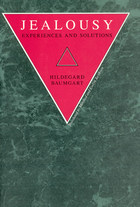 Jealousy: Experiences and Solutions
Hildegard Baumgart
University of Chicago Press, 1990 Deeply ingrained in human nature, jealousy occurs in everyone's life, with varying intensity and significance. Profoundly puzzling, jealousy provokes humans to irrational, sometimes violent acts against others or against themselves. It is a passion that has fascinated writers, storytellers, and audiences through the ages.
Hildegard Baumgart, a practicing marriage counselor, pursues a multilayered exploration of jealousy that is at once public history, based on literary and cultural records, and private history, drawn from individual clinical cases and psychoanalytic practice. In the process she discovers provocative new answers to two central questions: How can one understand jealousy, whether one's own or another's?
Baumgart focuses on the fear of comparison with the rival that motivates much jealousy, and she shows how this idea is, in fact, built into both mythology and theology. She adroitly combines a rich array of documentation and evidence: detailed, clinical descriptions of the classic dilemmas of love triangles; a history of the concept of jealousy in the Judeo-Christian tradition; examples from the lives and writings of a fascinating gallery of authors (Shakespeare, Tolstoy, and Goethe, among others); discussions of Freud's writings on jealousy and of later psychoanalytic methodologies such as systems analysis, paradoxical intervention, and communications theory.
Throughout her narrative, Baumgart writes with compassion and feeling. Drawing on her personal experience of jealousy, her own psychoanalysis, and anecdotes from her counseling work and the clinical literature at large, she presents many fascinating vignettes of the painful—sometimes crippling—effects of jealousy as seen from the standpoints of both sufferer and therapist. What is more, she offers sensitive and sensible solutions to the problem of jealousy.
Baumgart's intriguing tapestry of the varied manifestations and interpretations of jealousy gives extraordinary resonance to the case histories she describes. In providing such a panoramic view, Jealousy invites everyone—analysts, counselors, sociologists, jealous lovers, and avid readers of advice columns—to reconsider both the cultural significance and personal meaning of this universal emotion.
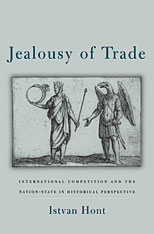 Jealousy of Trade: International Competition and the Nation-State in Historical Perspective
Istvan Hont
Harvard University Press, 2005 This collection explores eighteenth-century theories of international market competition that continue to be relevant for the twenty-first century. “Jealousy of trade” refers to a particular conjunction between politics and the economy that emerged when success in international trade became a matter of the military and political survival of nations. Today, it would be called “economic nationalism,” and in this book Istvan Hont connects the commercial politics of nationalism and globalization in the eighteenth century to theories of commercial society and Enlightenment ideas of the economic limits of politics.The book begins with an analysis of how the notion of “commerce” was added to Hobbes’s “state of nature” by Samuel Pufendorf. Hont then considers British neo-Machiavellian political economy after the Glorious Revolution. From there he moves to a novel interpretation of the political economy of the Scottish Enlightenment, particularly of David Hume and Adam Smith, concluding with a conceptual history of nation-state and nationalism in the French Revolution.Jealousy of Trade combines political theory with intellectual history, illuminating the past but also considering the challenges of today.
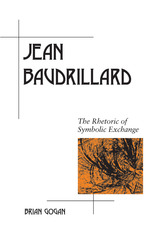 Jean Baudrillard: The Rhetoric of Symbolic Exchange
Brian Gogan
Southern Illinois University Press, 2018 Jean Baudrillard has been studied as sociologist, philosopher, cultural theorist, political commentator, and photographer. Brian Gogan establishes him as a rhetorician, demonstrating how the histories, traditions, and practices of rhetoric prove central to his use of language. In addition to Baudrillard’s standard works, Gogan examines many of the scholar’s lesser-known writings that have never been analyzed by rhetoricians, and this more comprehensive approach presents fresh perspectives on Baudrillard’s work as a whole.
Gogan examines both the theorist and his rhetoric, combining these two lines of inquiry in ways that allow for provocative insights. Part one of the book explains Baudrillard’s theory as compatible with the histories and traditions of rhetoric, outlining his novel understanding of rhetorical invention as involving thought, discourse, and perception. Part two evaluates Baudrillard’s work in terms of a perception of him—as an aphorist, an illusionist, an ignoramus, and an ironist. A biographical sketch and a critical review of the literature on Baudrillard and rhetoric round out the study.
This book makes the French theorist’s complex concepts understandable and relates them to the work of important thinkers, providing a thorough and accessible introduction to Baudrillard’s ideas.
Jean Desmet and the Early Dutch Film Trade
Ivo Blom
Amsterdam University Press, 2003 The Netherlands Film Museum's Desmet Collection contains the estate of Dutch cinema owner and film distributor Jean Desmet (1875-1956): almost nine hundred European and American films of all genres, a collection of publicity material, and a massive business archive. These three sources form the basis of this book, the first comprehensive reconstruction of Desmet's career. From his nomadic beginnings as a traveling showman to his successful switch to permanent cinema operation and film distribution, Blom shows how Desmet's fortunes encapsulated a series of structural changes within the new culture of the cinema.
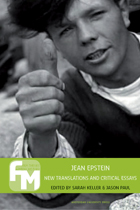 Jean Epstein: Critical Essays and New Translations
Edited by Sarah Keller and Jason N. Paul
Amsterdam University Press, 2012
Although early film buffs may be familiar with Jean Epstein’s films, including an adaptation of Edgar Allan Poe’s The Fall of the House of Usher, not many Anglophones are acquainted with his poetic and provocative prose. Gathered in this wide-ranging collection are new translations into English of every major theoretical work on film theory Epstein ever published, as well a series of essays by other film makers and scholars of art history, French studies, and film, which provide incisive commentary and essential context for Epstein as both a director and a theoretician. As a result, Jean Epstein: Critical Essays and New Translations provides an expansive account of the artist and the man, from his beginnings as a student of biology and aspiring poet to his late film projects and posthumously published writings. By both connecting Epstein to his era and offering contemporary criticism of his films, the essays in this book demonstrate his ongoing importance in film history and theory. This collection is a timely reexamination of a filmmaker and author who has much to offer modern audiences and readers.
Jean Jacques Rousseau: Political Writings
Frederick Watkins
University of Wisconsin Press, 1986 Frederick Watkins’ 1953 edition of Rousseau’s Political Writings has long been noted for being fully accurate while representing much of Rousseau’s eloquence and elegance. It contains what is widely regarded as the finest English translation of The Social Contract, Rousseau’s greatest political treatise. In addition, this edition offers the best available translation of the late and important Government of Poland and the only published English translation of the fragment Constitutional Project for Corsica, which, says Watkins, provides the clearest possible demonstration of the practical implications of Rousseau’s political thought.
Jean Paton and the Struggle to Reform American Adoption
E. Wayne Carp
University of Michigan Press, 2013 Jean Paton (1908–2002) fought tirelessly to reform American adoption and to overcome prejudice against adult adoptees and women who give birth out of wedlock. Paton wrote widely and passionately about the adoption experience, corresponded with policymakers as well as individual adoptees, promoted the psychological well-being of adoptees, and facilitated reunions between adoptees and their birth parents. E. Wayne Carp's masterful biography brings to light the accomplishments of this neglected civil-rights pioneer, who paved the way for the explosive emergence of the adoption reform movement in the 1970s. Her unflagging efforts over five decades helped reverse harmful policies, practices, and laws concerning adoption and closed records, struggles that continue to this day.
Jean Paul Marat: Tribune of the French Revolution
Clifford D. Conner
Pluto Press, 2012 Jean-Paul Marat’s role in the French Revolution has long been a matter of controversy among historians. Often he has been portrayed as a violent, sociopathic demagogue. This biography challenges that interpretation and argues that without Marat’s contributions as an agitator, tactician, and strategist, the pivotal social transformation that the Revolution accomplished might well not have occurred.
Clifford D. Conner argues that what was unique about Marat - which set him apart from all other major figures of the Revolution, including Danton and Robespierre - was his total identification with the struggle of the propertyless classes for social equality.
This is an essential book for anyone interested in the history of the revolutionary period and the personalities that led it.
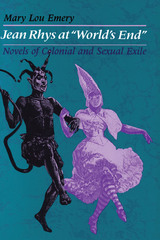 Jean Rhys at "World's End": Novels of Colonial and Sexual Exile
By Mary Lou Emery
University of Texas Press, 1990 The Caribbean Islands have long been an uneasy meeting place among indigenous peoples, white European colonists, and black slave populations. Tense oppositions in Caribbean culture—colonial vs. native, white vs. black, male conqueror vs. female subject—supply powerful themes and spark complex narrative experiments in the fiction of Dominica-born novelist Jean Rhys. In this pathfinding study, Mary Lou Emery focuses on Rhys's handling of these oppositions, using a Caribbean cultural perspective to replace the mainly European aesthetic, moral, and psychological standards that have served to misread and sometimes devalue Rhys's writing. Emery considers all five Rhys novels, beginning with Wide Sargasso Sea as the most explicitly Caribbean in its setting, in its participation in the culminating decades of a West Indian literary naissance, and most importantly, in its subversive transformation of European concepts of character. From a sociocultural perspective, she argues persuasively that the earlier novels—Voyage in the Dark, Quartet, After Leaving Mr. Mackenzie, and Good Morning, Midnight—should be read as emergent Caribbean fiction, written in tense dialogue with European modernism. Building on this thesis, she reveals how the apparent passivity, masochism, or silence of Rhys's female protagonists results from their doubly marginalized status as women and as subject peoples. Also, she explores how Rhys's women seek out alternative identities in dreamed of, magically realized, or chosen communities. These discoveries offer important insights on literary modernism, Caribbean fiction, and the formation of female identity.
 Jean Stafford: The Savage Heart
By Charlotte Margolis Goodman
University of Texas Press, 1990 One of America's best short story writers and author of three fine novels, Boston Adventure (1944), The Mountain Lion (1947), and The Catherine Wheel (1952), Jean Stafford has been rediscovered by another generation of readers and scholars. Although her novels and her Pulitzer Prize–winning short stories were widely read in the 1940s and 1950s, her fiction has received less critical attention than that of other distinguished contemporary American women writers such as Carson McCullers, Flannery O'Connor, and Eudora Welty. In this literary biography, Charlotte M. Goodman traces the life of the brilliant yet troubled Jean Stafford and reassesses her importance. Drawing on a wealth of original material, Goodman describes the vital connections between Stafford's life and her fiction. She discusses Stafford's difficult family relationships, her tempestuous first marriage to the poet Robert Lowell, her unresolved conflicts about gender roles, her alcoholism and bouts with depression—and her amazing ability to transform the chaotic details of her life into elegant works of fiction. These wonderfully crafted works offer insightful portraits of alienated and isolated characters, most of whom exemplify not only human estrangement in the modern world, but also the special difficulties of girls and women who refuse to play traditional roles. Goodman locates Jean Stafford within the literary world of the 1940s and 1950s. In her own right, and through her marriages to Robert Lowell, Life magazine editor Oliver Jensen, and journalist A. J. Liebling, Stafford associated with many of the major literary figures of her day, including the Southern Fugitives, the New York intellectual coterie, and writers for the New Yorker, to which she regularly contributed short stories. Goodman also describes Stafford's sustaining friendships with other women writers, such as Evelyn Scott and Caroline Gordon, and with her New Yorker editor, Katharine S. White. This highly readable biography will appeal to a wide audience interested in twentieth-century literature and the writing of women's lives.
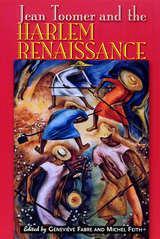 Jean Toomer & Harlem Renaissance
Edited by Geneviève Fabre and Michel Feith
Rutgers University Press, 2000 Jean Toomer's novel Cane has been hailed as the harbinger of the Harlem Renaissance and as a model for modernist writing, yet it eludes categorization and its author remains an enigmatic and controversial figure in American literature. The present collection of essays by European and American scholars gives a fresh perspective by using sources made available only in recent years, highlighting Toomer's bold experimentations, as well as his often ambiguous responses to the questions of his time. Some of the essays achieve this through close readings of the text, leading to new and challenging interpretations of Toomer's transcendence of genres and styles. Others show how the publication of Cane and his later writings placed Toomer at the heart of contemporary ideological and artistic debates: race and identity, the negro writer and the white literary world, primitivism and modernism.
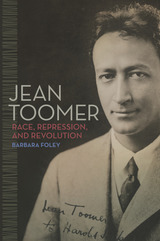 Jean Toomer: Race, Repression, and Revolution
Barbara Foley
University of Illinois Press, 2019 The 1923 publication of Cane established Jean Toomer as a modernist master and one of the key literary figures of the emerging Harlem Renaissance. Though critics and biographers alike have praised his artistic experimentation and unflinching eyewitness portraits of Jim Crow violence, few seem to recognize how much Toomer's interest in class struggle, catalyzed by the Russian Revolution and the post–World War One radical upsurge, situate his masterwork in its immediate historical context. In Jean Toomer: Race, Repression, and Revolution, Barbara Foley explores Toomer's political and intellectual connections with socialism, the New Negro movement, and the project of Young America. Examining his rarely scrutinized early creative and journalistic writings, as well as unpublished versions of his autobiography, she recreates the complex and contradictory consciousness that produced Cane. Foley's discussion of political repression runs parallel with a portrait of repression on a personal level. Examining family secrets heretofore unexplored in Toomer scholarship, she traces their sporadic surfacing in Cane. Toomer's text, she argues, exhibits a political unconscious that is at once public and private.
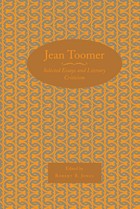 Jean Toomer: Selected Essays and Literary Criticism
Jones, Robert B.
University of Tennessee Press, 2006 "This book is what scholars of American and African American literature have needed for quite some time. Robert B. Jones's selection of materials is excellent, and his expert ordering reveals that breadth and evolution of Jean Toomer's thought over several decades. This collection will considerably enlarge our understanding of the author whose reputation remains tied, in large part, to Cane." —Rudolph P. Byrd, Emory University
"Like the intertextual relations between 'black-authored' and 'white-authored' literary works, the relationships between Black and White intellectuals in New York in the 1910s and 1920s, both personally and intellectually, were far more fluid and complex—and productive—than American scholarship has acknowledged. The essays collected here enhance such acknowledgment considerably, with implications for the transformation of our understanding of American modernism as well as the interracial cultural history o the United States. Certainly, such was Robert Jones's large and generous aim in creating this important book. —from the Foreword by Georg Hutchinson
Jean Valentine: This-World Company
Kazim Ali and John Hoppenthaler, editors
University of Michigan Press, 2012 Over the course of more than four decades, contemporary American poet Jean Valentine has written eleven books of stunning, spirit-inflected poetry. This collection of essays, assembled over several years by Kazim Ali and John Hoppenthaler, brings together twenty-six pieces on all stages of Valentine's career by a range of poets, scholars, and admirers. Valentine's poetry has long been valued for its dreamlike qualities, its touches of the personal and the political, and its mesmerizing phrasing. Valentine is a National Book Award winner and was named the State Poet of New York in 2008. She has taught a number of popular workshops and has been awarded a Bunting Institute Fellowship, a Guggenheim Foundation Fellowship, and the Shelley Memorial Prize.
 Jean-Antoine Houdon: Sculptor of the Enlightenment
Anne L. Poulet
University of Chicago Press, 2003 Jean-Antoine Houdon (1741-1826) has long been recognized as the greatest European portrait sculptor of the late eighteenth century, flourishing during both the American and French Revolutions as well as during the Directoire and Empire in France. Whether sculpting a head of state, an intellectual, or a young child, Houdon had an uncanny ability to capture the essence of his subject with a characteristic pose or expression. Yet until now, Houdon's exquisite sculptures have never been the subject of a major exhibition.
This lavish exhibition catalogue will immediately take its rightful place as the definitive work on Houdon. With more than one hundred color plates and two hundred black and white halftones, Jean-Antoine Houdon: Sculptor of the Enlightenment illustrates every stage of the sculptor's fascinating career, from his early portrayals of Louis XVI and Marie Antoinette to his stunning portraits of American patriots such as George Washington, the Marquis de Lafayette, John Paul Jones, Benjamin Franklin, and Thomas Jefferson. Indeed the images we hold dear of legendary Enlightenment figures like Diderot, Rousseau, d'Alembert, and Voltaire are based on works by Houdon. More than mere representations, these sculptures provide us fascinating, intimate glimpses into the very core of who these figures were. Houdon's genius animated even his less illustrious subjects, like his portraits of his family and friends, and filled his sculptures of children with delicacy and freshness. Accompanying the images of Houdon's masterworks are four insightful essays that discuss Houdon's views on art (based in part on a newly discovered manuscript written by the artist) as well as his prominence in the highly varied cultures of eighteenth-century France, Germany, and Russia.
From aristocrats to revolutionaries, actors to philosophers, Houdon's amazingly vivid portraits constitute the visual record of the Enlightenment and capture the true spirit of a remarkable age. Jean-Antoine Houdon finally gives these gorgeous works their due.
 Jean-Claude Grumberg: Three Plays
By Jean-Claude Grumberg and Seth Wolitz
University of Texas Press, 2014 Winner of seven Molières, the Pulitzer Prize of France, Jean-Claude Grumberg is one of France’s leading dramatists and a distinguished voice of modern European Jewry after the Shoah. His success in portraying contemporary Parisian Jews on the stage represents a new development in European theater and a new aesthetic expression of European Jewish experience and sensibility of the Holocaust and its aftermath, a perspective quite different from either the American or the Israeli one. Grumberg’s Jews are French to their fingertips, yet they have been made more consciously Jewish by the war and the difficulties of reintegrating into a society in which too many neighbors denounced them or ignored their pleas to save their children. Affirming the new status of Jewish culture, Grumberg’s plays insist on the recognition of Jewish identity and uniqueness within the majority societies of Europe. This volume offers the first English translation of three of Grumberg’s prize-winning plays: The Workplace (L’Atelier, 1979), On the Way to the Promised Land (Vers toi Terre promise, 2006) and Mama’s Coming Back, Poor Orphan (Maman revient, pauvre orphelin, 1994). Presented in the order of the history they record and steeped in Grumberg’s personal experience and insights into contemporary Parisian life, these plays serve as documentary witnesses that begin with the immediate postwar reality and continue up to the end of the twentieth century. Seth Wolitz provides notes on the plays’ themes, structures, characters, and settings, along with an introduction that discusses Grumberg’s place within the emergence of French-Jewish drama and a translation of an interview with the playwright himself.
Jean-Jacques Rousseau: Transparency and Obstruction
Jean Starobinski
University of Chicago Press, 1988 Jean Starobinski, one of Europe's foremost literary critics, examines the life that led Rousseau, who so passionately sought open, transparent communication with others, to accept and even foster obstacles that permitted him to withdraw into himself. First published in France in 1958, Jean-Jacques Rousseau remains Starobinski's most important achievement and, arguably, the most comprehensive book ever written on Rousseau. The text has been extensively revised for this edition and is published here along with seven essays on Rousseau that appeared between 1962 and 1970.
 Jean-Jacques: The Early Life and Work of Jean-Jacques Rousseau, 1712-1754
Maurice Cranston
University of Chicago Press, 1991 In the first volume of his trilogy, noted political philosopher Maurice Cranston draws from original manuscript sources to trace Rousseau's life from his birth in provincial obscurity in Geneva, through his youthful wanderings, to his return to Geneva in 1754 as a celebrated writer and composer.
"[An] admirable biography which is as meticulous, calm, reasonable, and judicious as its subject is passionate and tumultuous."—Keith Michael Baker, Washington Post Book World
"The definitive biography, as scholarly as it is entertaining."—The Economist
"Exceptionally fresh . . . . [Cranston] seems to know exactly what his readers need to know, and thoughtfully enriches the background—both physical and intellectual—of Rousseau's youthful peregrinations . . . . He makes the first part of Rousseau's life as absorbing as a picaresque novel. His fidelity to Rousseau's ideas and to his life as it was lived is a triumph of poise."—Naomi Bliven, The New Yorker
"The most outstanding achievement of Professor Cranston's own distinguished career."—Robert Wokler, Times Literary Supplement
Maurice Cranston (1920-1993), a distinguished scholar and recipient of the James Tait Black Memorial Prize for his biography of John Locke, was professor of political science at the London School of Economics. His numerous books include The Romantic Movement and Philosophers and Pamphleteers, and translations of Rousseau's The Social Contract and Discourse on the Origins of Inequality.
|
|

